Search Result
Results for "
hydrolyzing
" in MedChemExpress (MCE) Product Catalog:
32
Biochemical Assay Reagents
4
Isotope-Labeled Compounds
| Cat. No. |
Product Name |
Target |
Research Areas |
Chemical Structure |
-
- HY-W015495
-
|
|
Endogenous Metabolite
|
Others
|
|
L-Dihydroorotic acid can reversibly hydrolyze to yield the acyclic L-ureidosuccinic acid by dihydrowhey enzyme .
|
-
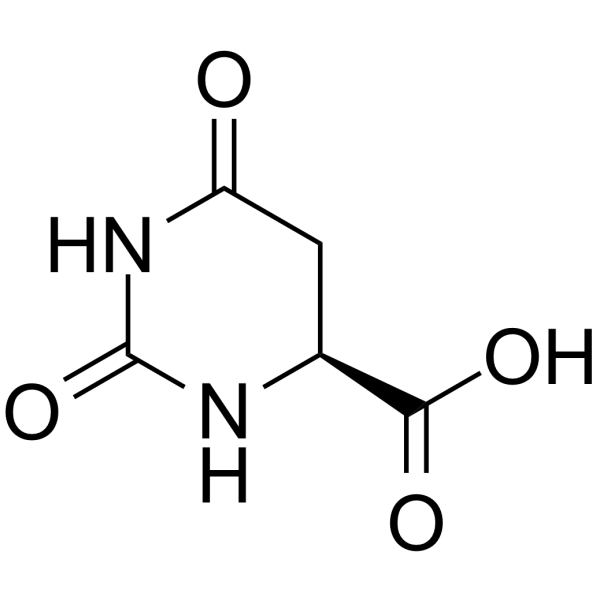
-
- HY-126386
-
|
EC 3.2.1.15
|
Others
|
Others
|
|
Pectinase (EC 3.2.1.15) is a mixed enzymes that hydrolyze pectic substances, it mostly presents in microorganisms and higher plants. Pectinase is involved in the metabolism of the cell wall as well as in the growth of the cell, senescence, ripening of fruits, pathogenesis and abscission process .
|
-

-
- HY-P2373
-
|
|
Others
|
Cardiovascular Disease
|
|
Nattokinase, Natto fermentation is a potent fibrinolytic enzyme. Nattokinase can break down blood clots by directly hydrolyzing fibrin and plasmin substrate. Nattokinase can be used for the research of cardiovascular diseases .
|
-
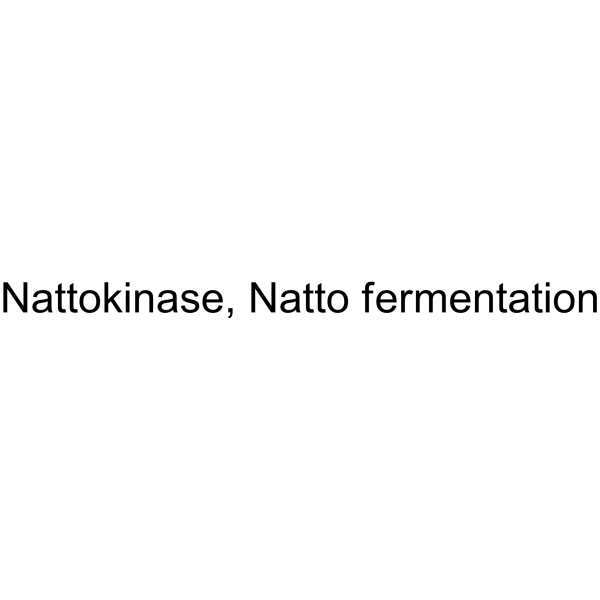
-
- HY-W275616
-
|
|
Others
|
Others
|
|
4-Methylumbelliferyl nonanoate is a fluorogenic substrate of esterases. 4-Methylumbelliferyl nonanoate can be hydrolyzed to 4-methylumbelliferone with bright blue fluorescence .
|
-
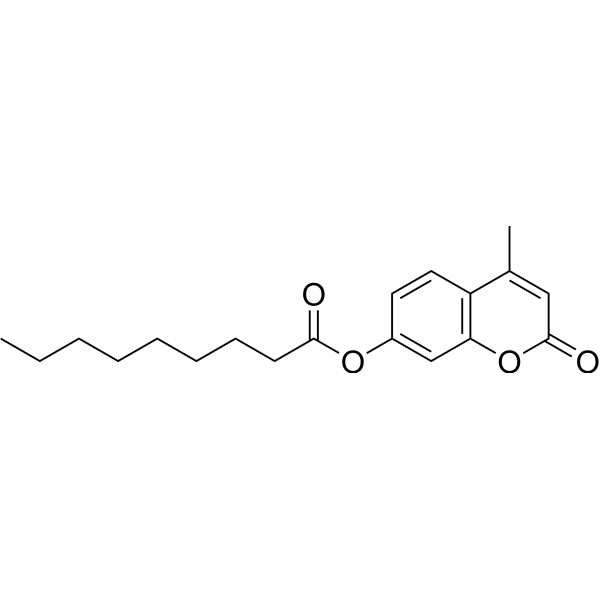
-
- HY-P1068A
-
|
|
Bacterial
|
Infection
|
|
Recombinant human lysozyme (plant expression) is a conserved anti-bacterial protein that causes bacterial lysis and death by hydrolyzing bacterial cell wall peptidoglycan (PG). Recombinant human lysozyme (plant expression) can be used to study bacterial infections .
|
-
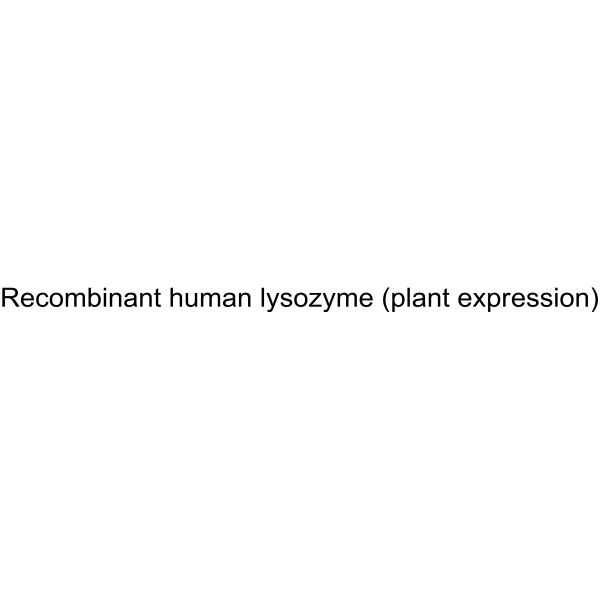
-
- HY-147062
-
|
|
Others
|
Metabolic Disease
|
|
N-acetyl-D-galactosamine 6-phosphate is a galactosamine phosphate that involved in galactose metabolism and phosphotransferase system (PTS). N-Acetyl-D-galactosamine-6-phosphate can be hydrolyze by NagA .
|
-
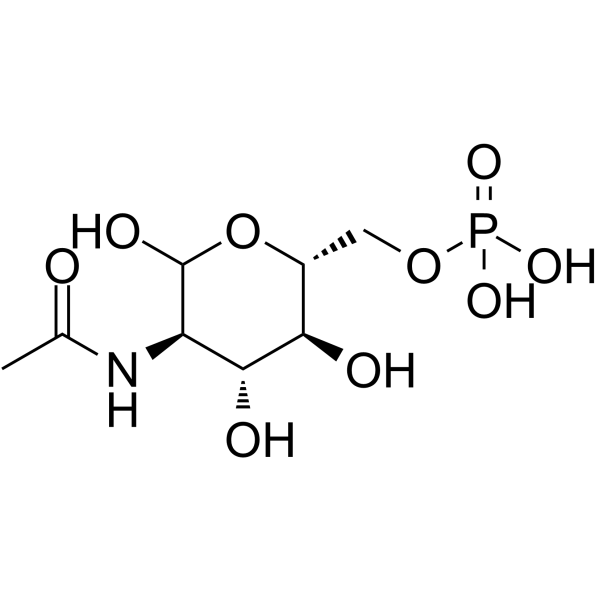
-
- HY-P2802
-
|
α-D-Glucosidase
|
Glucosidase
|
Metabolic Disease
|
|
α-Glucosidase (α-D-Glucosidase), a carbohydrate hydrolyzing enzyme, catalyzes the liberation of α-glucose from the non-reducing end of the substrate. α-Glucosidase can facilitate the absorption of glucose by the small intestine. Inhibition of α-Glucosidase is an effective management of non-insulin-dependent diabetes mellitus (NIDDM) .
|
-
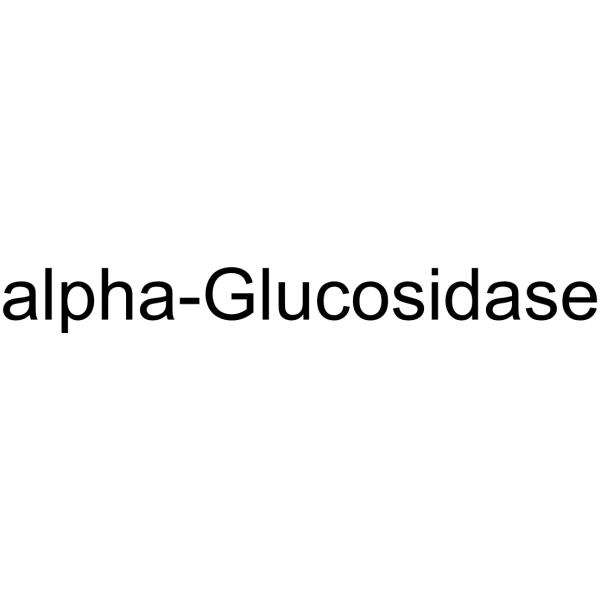
-
- HY-N6731
-
|
|
Others
|
Infection
|
|
Hydrolyzed Fumonisin B2 (HFB2) is a hydrolysis product of fumonisins (HF), which retains biological activity. Hydrolyzed Fumonisin B2 (HFB2) exhibits phytotoxicity .
|
-
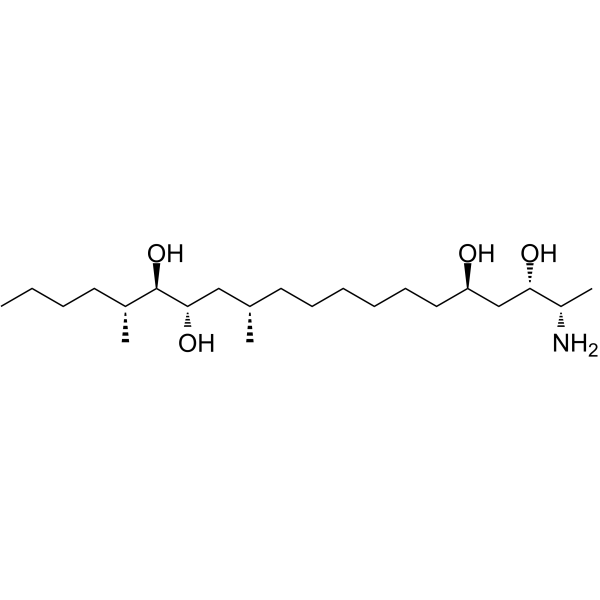
-
- HY-101541S
-
|
Methyl docosahexaenoate-d5; all cis-DHA methyl ester-d5
|
Isotope-Labeled Compounds
|
Neurological Disease
|
|
Docosahexaenoic acid-d5 methyl ester is the deuterium labeled Docosahexaenoic Acid methyl ester. Docosahexaenoic Acid methyl ester is a methylated docosahexaenoic acid analog which can be intercalated into membrane phospholipids without being oxidized or hydrolyzed[1][2].
|
-
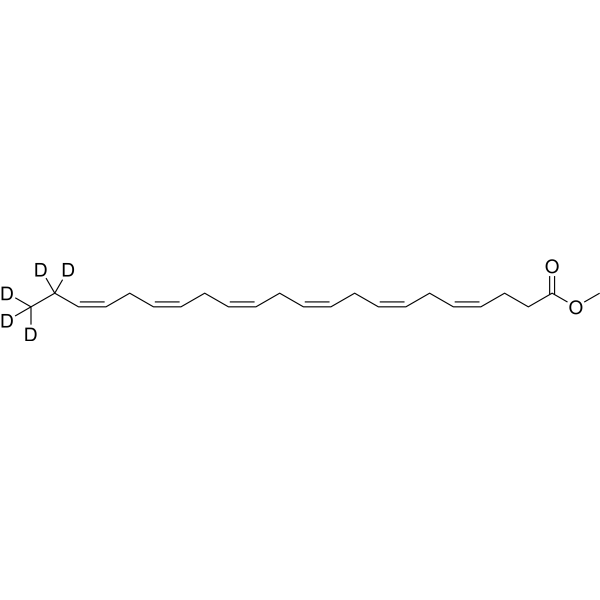
-
- HY-N6730
-
|
Aminopentol
|
Apoptosis
|
Neurological Disease
|
|
Hydrolyzed Fumonisin B1 (Aminopentol) is the backbone and main hydrolysis product of the mycotoxin Fumonisin B1 (HY-N6719). Hydrolyzed Fumonisin B1 can weakly inhibit ceramide synthase .
|
-
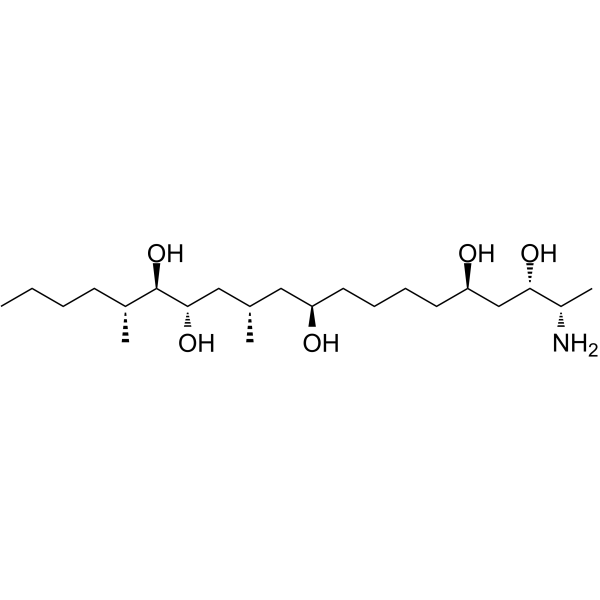
-
- HY-E70113
-
|
|
Others
|
Others
|
|
β-Fructosidase is an enzyme that hydrolyzes sucrose to release fructose and glucose .
|
-
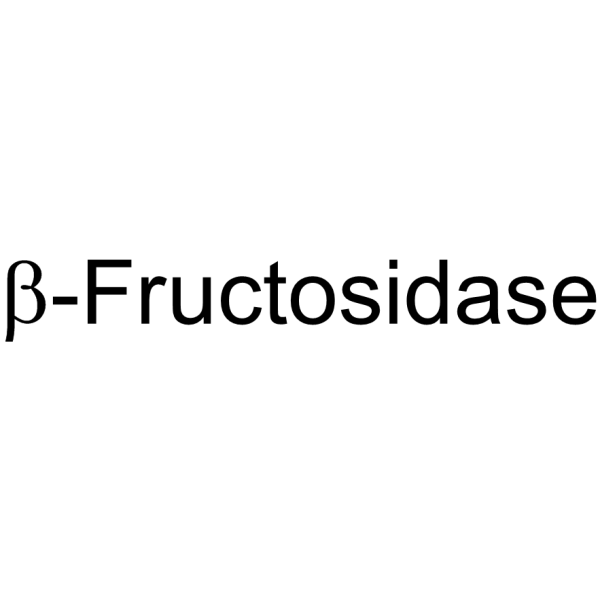
-
- HY-B1323
-
|
Dipivefrine hydrochloride
|
Endogenous Metabolite
|
Neurological Disease
|
|
Dipivefrin hydrochloride (Dipivefrine hydrochloride) is an antiglaucoma proagent that is hydrolyzed to the active compound, epinephrine, by esterases in the cornea .
|
-
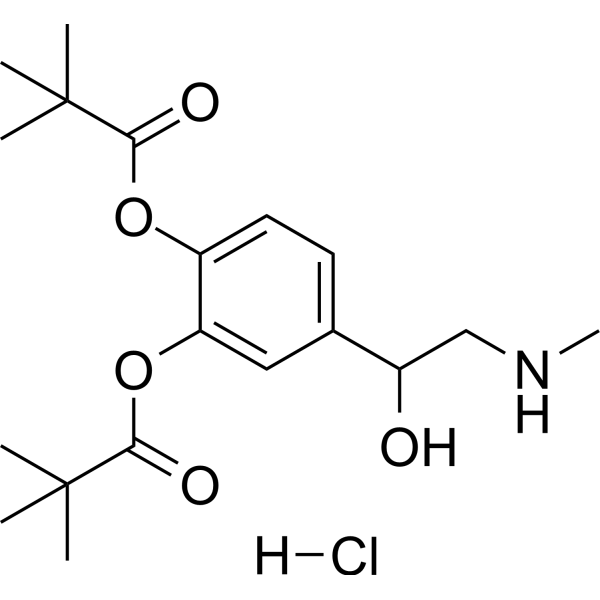
-
- HY-Y0850I
-
|
PVA (Mw 9000-10000, 80% hydrolyzed); Poly(Ethenol) (Mw 9000-10000, 80% hydrolyzed)
|
Biochemical Assay Reagents
|
Others
|
|
Polyvinyl alcohol (Mw 9000-10000, 80% hydrolyzed) also known as PVA, is a vinyl water-soluble polymer that can be used as a non-ionic surfactant. Polyvinyl alcohol (Mw 9000-10000, 80% hydrolyzed) can also be used as a biodegradable polymer and can be used in adhesives, coatings, textiles, ceramics, and cosmetics .
|
-
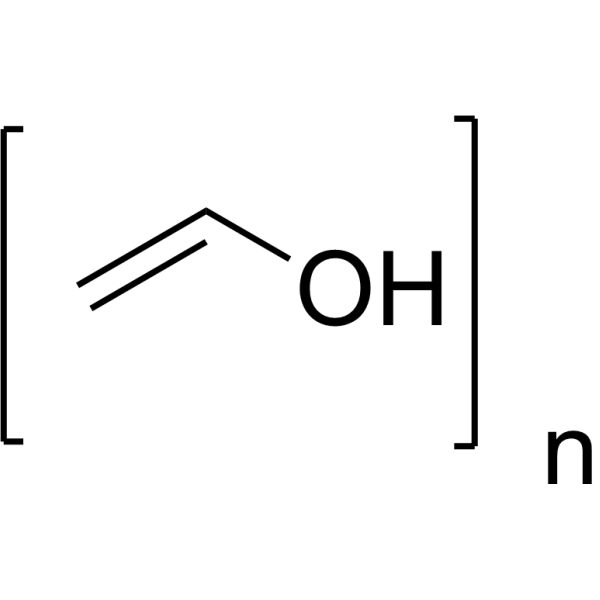
-
- HY-N7060
-
-
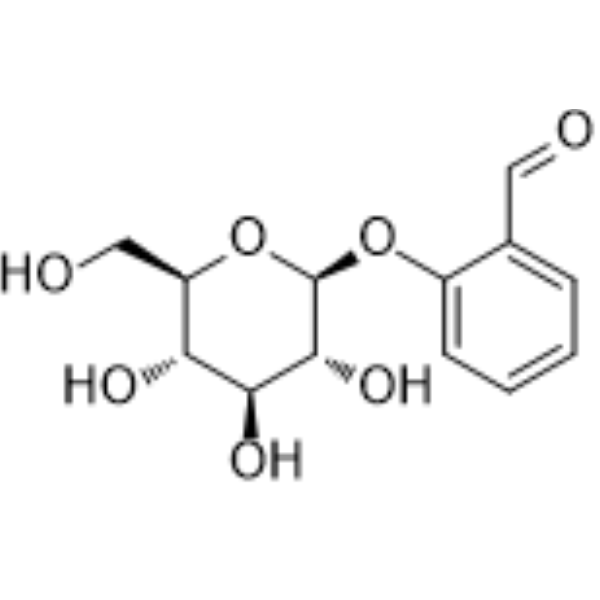
-
- HY-101541
-
|
Methyl docosahexaenoate; all cis-DHA methyl ester
|
Others
|
Neurological Disease
|
|
Docosahexaenoic Acid methyl ester is a methylated docosahexaenoic acid analog which can be intercalated into membrane phospholipids without being oxidized or hydrolyzed.
|
-
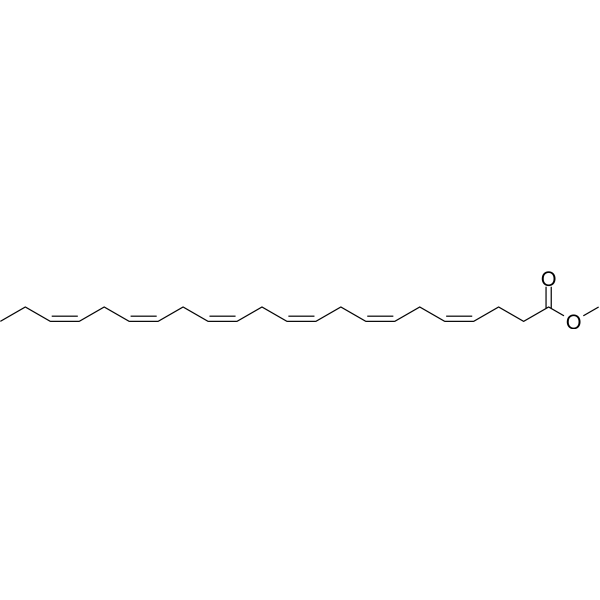
-
- HY-P2856
-
|
|
Endogenous Metabolite
|
Metabolic Disease
|
|
Phosphatidylinositol phosphodiesterase hydrolyzes phosphatidylinositol to diacylglycerols and a mixture of myoinositol 1- and 1, 2-cyclic phosphates .
|
-

-
- HY-B1278
-
|
D-Vitamin E acetate
|
|
|
|
D-α-Tocopherol acetate (D-Vitamin E acetate) can be hydrolyzed to d-alpha-tocopherol (VE) and absorbed in the small intestine .
|
-
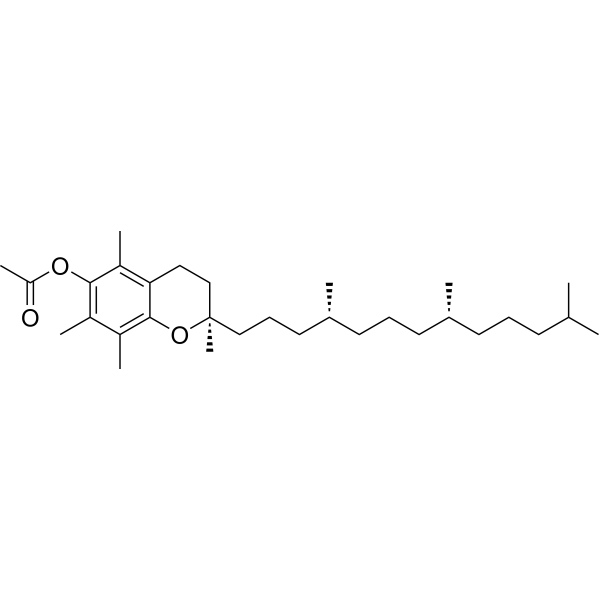
-
- HY-156133
-
|
|
Others
|
Others
|
|
Dihydrospinosyn A aglycone (compound 2) is a derivative of spinosyn A aglycone with a hydrolyzed C9- and C17-glycosidic bond.
|
-

-
- HY-Y0801
-
|
|
|
|
|
2,6-Dihydroxybenzoic acid is a secondary metabolite of salicylic acid which has been hydrolyzed by liver enzymes during phase I metabolism.
|
-
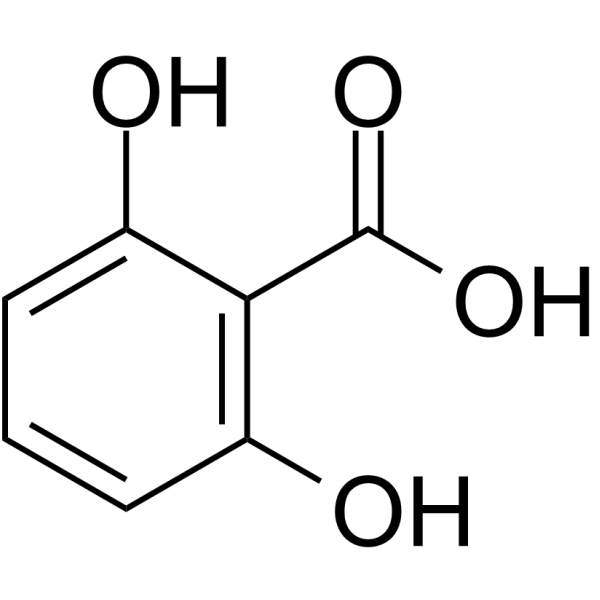
-
- HY-W004761
-
|
Hypodiboric acid
|
Biochemical Assay Reagents
|
Others
|
|
Tetrahydroxydiboron can be used to optimize the Miyaura borylation process, replacing bis(pinacolato) diboron by hydrolyzing the resulting boronic ester to its corresponding acid .
|
-
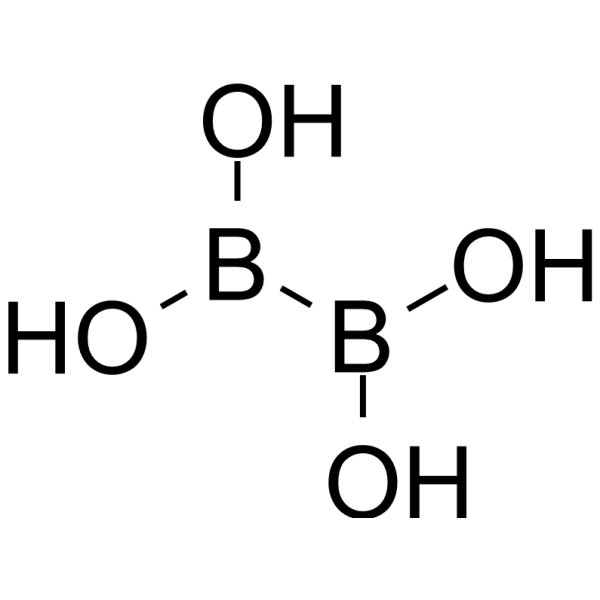
-
- HY-E70194
-
|
V8 protease; Glu-C
|
Ser/Thr Protease
|
Others
|
|
Endoproteinase GluC (V8 protease) is a serine proteinase. Endoproteinase GluC is able to hydrolyze some serpins and all classes of mammalian immunoglobulins .
|
-

-
- HY-Y0850O
-
|
PVA (Mw 31000-50000, 87-89% hydrolyzed); Poly(Ethenol) (Mw 31000-50000, 87-89% hydrolyzed)
|
Biochemical Assay Reagents
|
Others
|
|
Polyvinyl alcohol (Mw 31000-50000, 87-89% hydrolyzed) is a synthetic polymer derived from polyvinyl acetate through partial or complete hydroxylation .
|
-

-
- HY-126233
-
|
|
Phosphodiesterase (PDE)
|
Metabolic Disease
|
|
PAT-347 is an Autotaxin (ATX) inhibitor. ATX is a secretory enzyme that hydrolyzes lysophosphatidylcholine (LPC) and regulates lysophosphatidic acid (LPA) production in the blood .
|
-
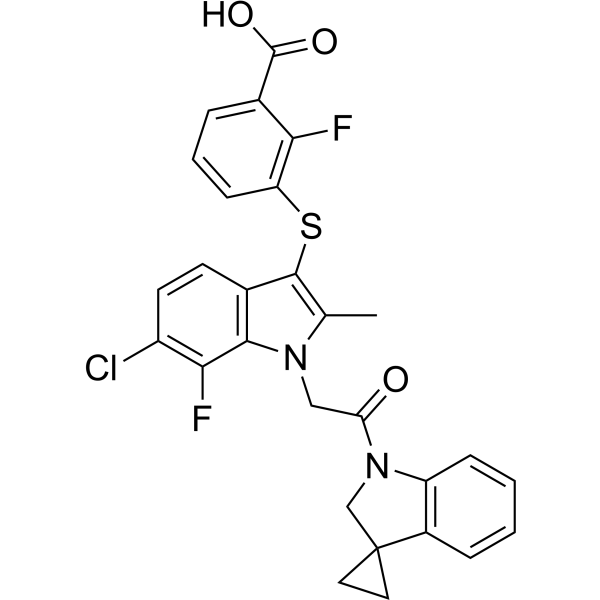
-
- HY-E70114
-
|
|
Others
|
Others
|
|
exo-Polygalacturonase is an extracellular pectinolytic enzyme. exo-Polygalacturonase acts from the non-reducing side, hydrolyzes pectic acids, and releases mono-galacturonate .
|
-

-
- HY-N2339
-
|
Cholesteryl docosanoate; Cholesterol behenate
|
Endogenous Metabolite
|
Metabolic Disease
|
|
Cholesteryl behenate is a cholesterol ester associated with the neutral core of low density lipoprotein Receptor-LDL complexes are taken up by lysosomes and hydrolyzed to release cholesterol from the esters.
|
-
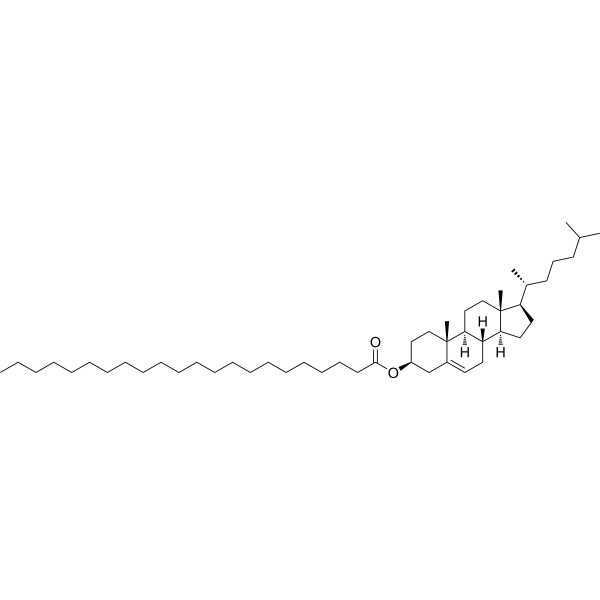
-
- HY-B1323S
-
|
Dipivefrine-d6 hydrochloride
|
Isotope-Labeled Compounds
Endogenous Metabolite
|
Neurological Disease
|
|
Dipivefrin-d6 (hydrochloride) is deuterium labeled Dipivefrin (hydrochloride). Dipivefrin hydrochloride (Dipivefrine hydrochloride) is an antiglaucoma proagent that is hydrolyzed to the active compound, epinephrine, by esterases in the cornea[1][2].
|
-
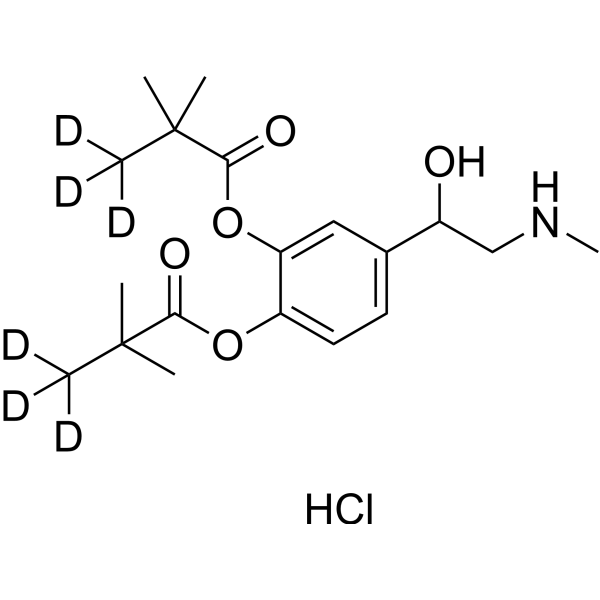
-
- HY-117281
-
-
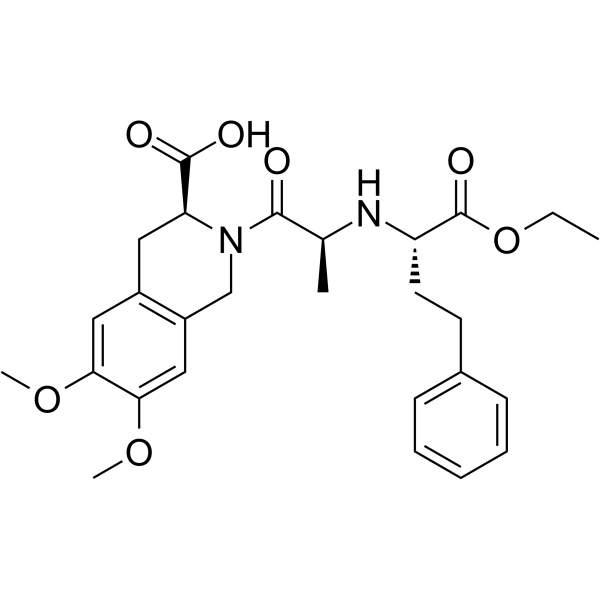
-
- HY-P2877
-
|
|
Endogenous Metabolite
|
Others
|
|
Tannase, also known as tanninyl hydrolase, is an enzyme that can hydrolyze ester bonds and tannic acid side bonds, releasing glucose and gallic acid, and is outstanding in clarifying wine and fruit juice .
|
-

-
- HY-D1758
-
|
|
Fluorescent Dye
|
Others
|
|
Fura-5F AM is a membrane-permeant fluorescent calcium indicator. Upon entering the cell, this probe is hydrolyzed by cytosilic esterases and trapped as the active chelator.
|
-
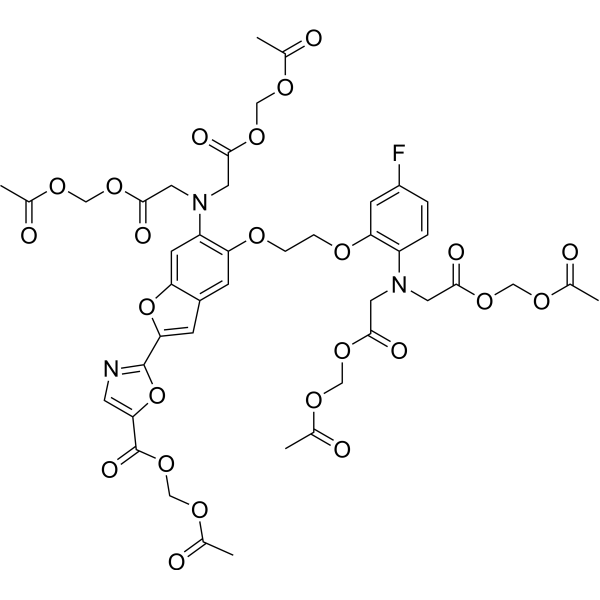
-
- HY-D1759
-
|
|
Fluorescent Dye
|
Others
|
|
Fura-4F AM is a cell-permeant fluorescent calcium indicator. Upon entering the cell, this probe is hydrolyzed by cytosilic esterases and trapped as the active chelator.
|
-
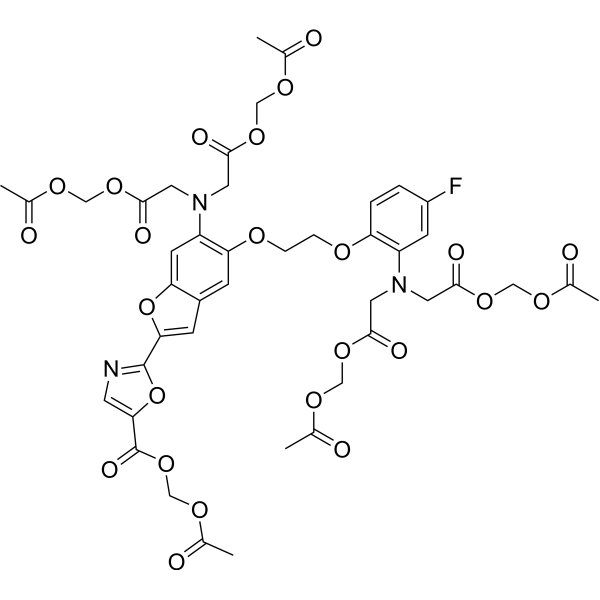
-
- HY-P2869
-
|
EC 3.2.1.23; GAL
|
Endogenous Metabolite
|
Others
|
|
β-Galactosidase (EC 3.2.1.23) is a glycoside hydrolase that hydrolyzes the β-glycosidic bonds formed between galactose and its organic moieties. In E.coli, the lacZ gene is the structural gene of β-galactosidase, which can be used as part of the induction system lac operon. β-Galactosidase can hydrolyze lactose to form glucose and galactose, and enter glycolysis; it can also catalyze the transgalactosylation of lactose into allolactose; allolactose can be cracked into monosaccharides .
|
-
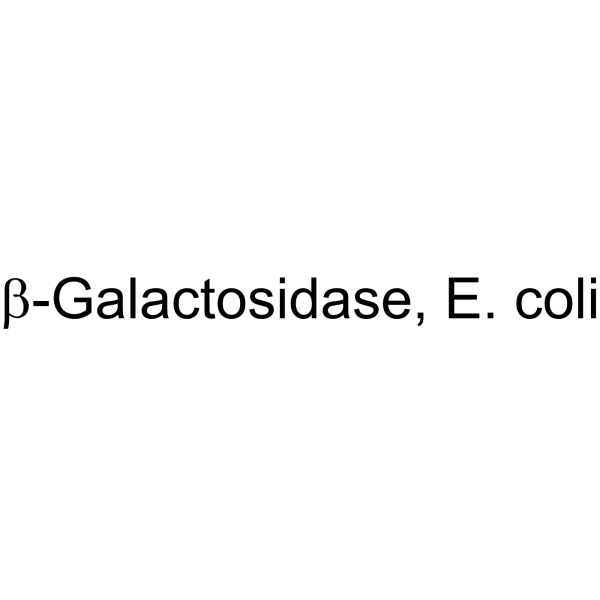
-
- HY-W053519
-
|
|
Others
|
Others
|
|
DL-Pantolactone can be hydrolyzed to Pantoic acid by the lactonohydrolase of Fusarium oxysporum. DL-Pantolactone also can be used in the preparation of 3,5-dinitrobenzoyl-DL-pantolactone .
|
-
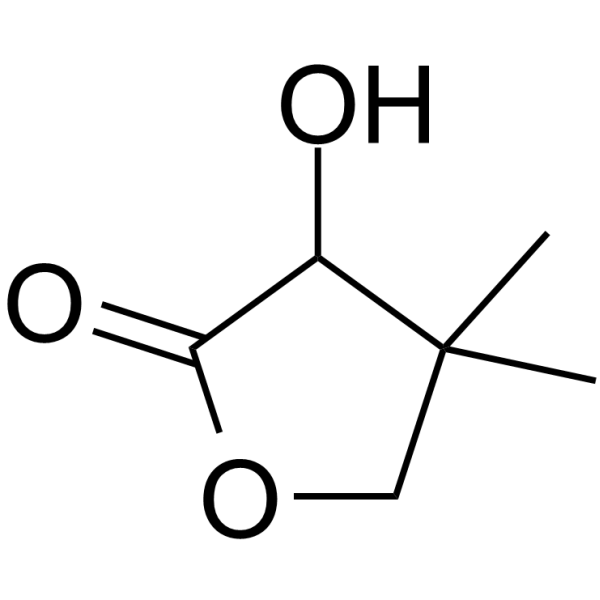
-
- HY-N9348A
-
|
|
Others
|
Metabolic Disease
Cancer
|
|
Glucoraphenin potassium induces xenobiotic metabolizing enzymes (XMEs). Glucoraphenin potassium, the predominant and orally active glucosinolate in radish sprouts, is hydrolyzed by myrosinase to sulforaphene that is implicated to exert anticancerogenic effects .
|
-

-
- HY-121975
-
|
|
Others
|
Inflammation/Immunology
|
|
N-Cyclohexanecarbonylpentadecylamine (Compound 1) is an inhibitor of N-Acylethanolamine hydrolyzing acid amidase (NAAA) with an IC50 of 4.5 μM. N-Cyclohexanecarbonylpentadecylamine can be used in the research of inflammation and pain .
|
-

-
- HY-134163
-
|
4-Methylumbelliferyl alpha-L-arabinopyranoside
|
Biochemical Assay Reagents
|
Others
|
|
4-Methylumbelliferyl α-L-arabinopyranoside (4-Methylumbelliferyl alpha-L-arabinopyranoside) is a substrate for enzymes that hydrolyze arabinose-containing substrates, such as α-L-arabinopyranoside .
|
-
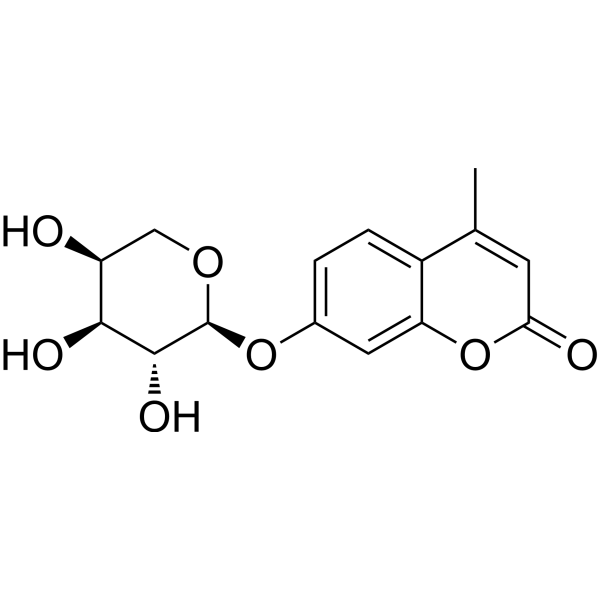
-
- HY-B0378A
-
|
RS-10085
|
Angiotensin-converting Enzyme (ACE)
Apoptosis
|
Cardiovascular Disease
|
|
Moexipril hydrochloride (RS-10085) is an orally active inhibitor of angiotensin-converting enzyme (ACE), and becomes effective by being hydrolyzed to moexiprila (hydrochloride). Moexipril hydrochloride exhibits antihypertensive and neuroprotective effects - .
|
-
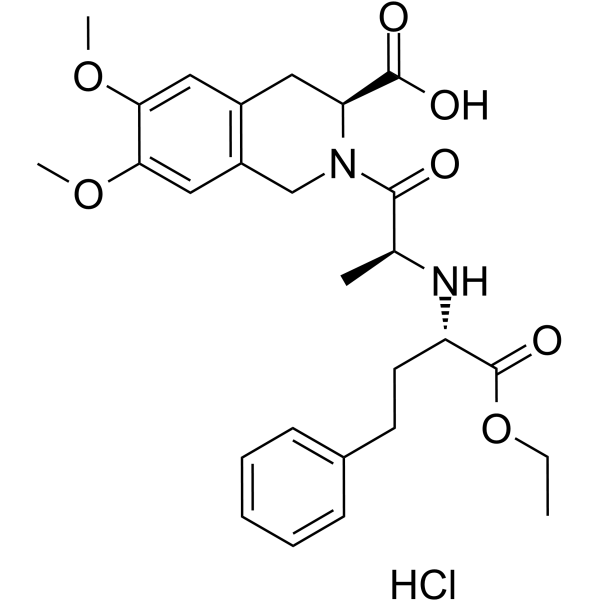
-
- HY-108880
-
|
Carbenicillin indanyl sodium; CP-15464-2
|
Bacterial
|
Infection
|
|
Carindacillin (Carbenicillin indanyl) sodium is an orally active and broad-spectrum antimicrobial agent. Carindacillin sodium can be hydrolyzed to Carbenicillin in vivo. Carindacillin sodium can be used for the research of urinary-tract infection .
|
-
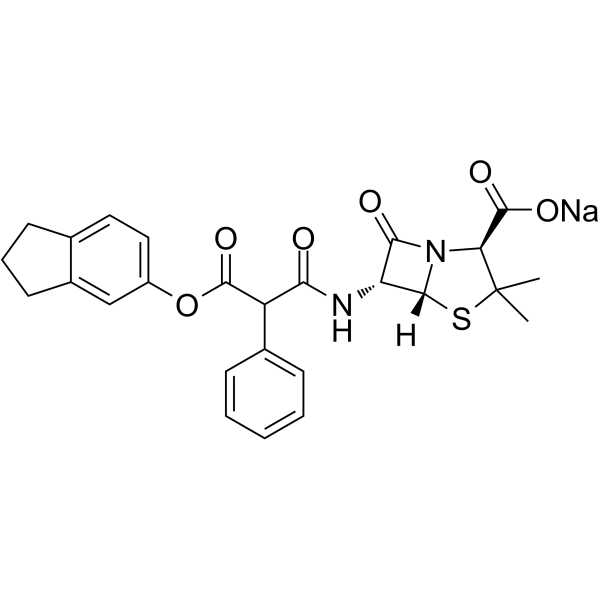
-
- HY-Y1422
-
|
|
|
|
|
Triacylglycerol lipase is an enzyme that preferentially hydrolyzes the outer links of triacylglycerols and acts only on the water-lipid interface. Pancreatic triacylglycerol lipase is the single most important determinant of lipid absorption .
|
-
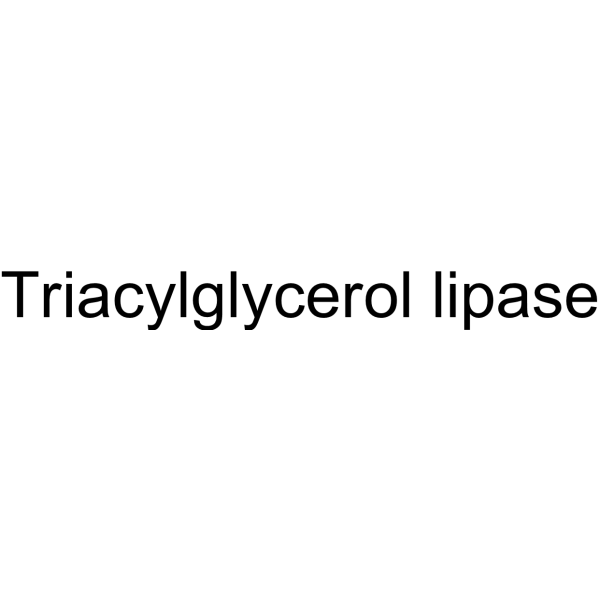
-
- HY-W013549
-
|
6-APA
|
Bacterial
|
Infection
|
|
6-Aminopenicillanic acid (6-APA) is an important precursor for the synthesis of -lactam antibiotics. 6-Aminopenicillanic acid is the main product of Penicillin G (PenG) hydrolyzed by penicillin acylase (PA) .
|
-
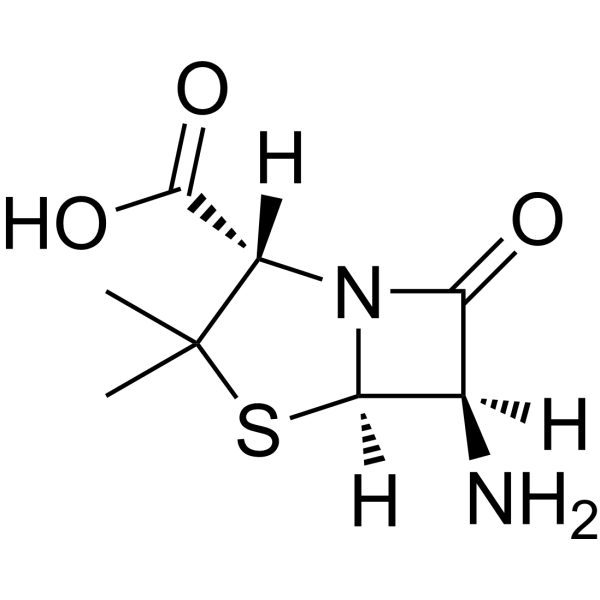
-
- HY-113862
-
|
|
Fluorescent Dye
|
Others
|
|
PHOME is a fluorogenic substrate for sEH. sEH can hydrolyze the epoxy ring in the PHOME substrate. PHOME can be used for fluorescent epoxide hydrolase assay (extracted from patent CN113402447A) .
|
-
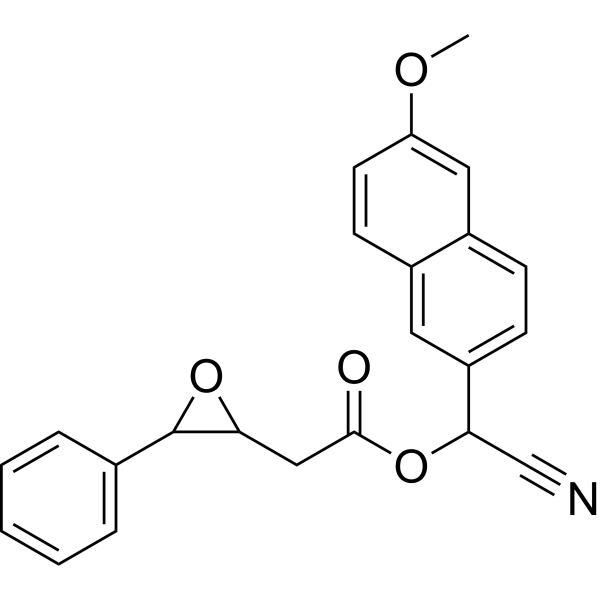
-
- HY-108826
-
|
Iduronate sulfate sulfatase
|
Endogenous Metabolite
|
Metabolic Disease
|
|
Iduronate sulfatase (Iduronate sulfate sulfatase) is an exo-sulfatase that hydrolyzes the C2-sulfate ester bond from nonreducing terminal α-L-iduronic acid residues in HS .
|
-
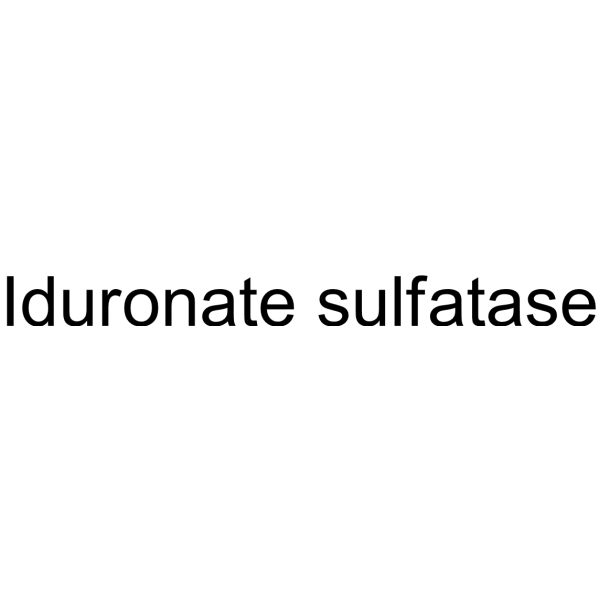
-
- HY-121941
-
|
|
Fluorescent Dye
|
Others
|
|
Epoxy Fluor 7 is a sensitive fluorescent substrate for soluble epoxide hydrolase (sEH) that can be used for human and mouse enzymes. Epoxy Fluor 7 is hydrolyzed to yield fluorescence used for monitoring the activity of sEH.
|
-
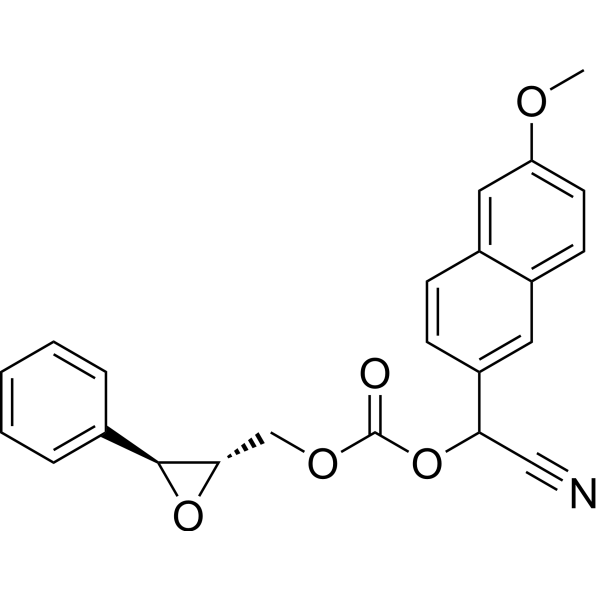
-
- HY-132882
-
|
|
Others
|
Inflammation/Immunology
|
|
ARN19689 is a potent, selective, orally active and non-covalent inhibitor of N‑Acylethanolamine-Hydrolyzing Acid Amidase (NAAA), with an IC50 of 42 nM. ARN19689 is a promising pharmacological tool to be further investigated in the field of inflammatory conditions .
|
-
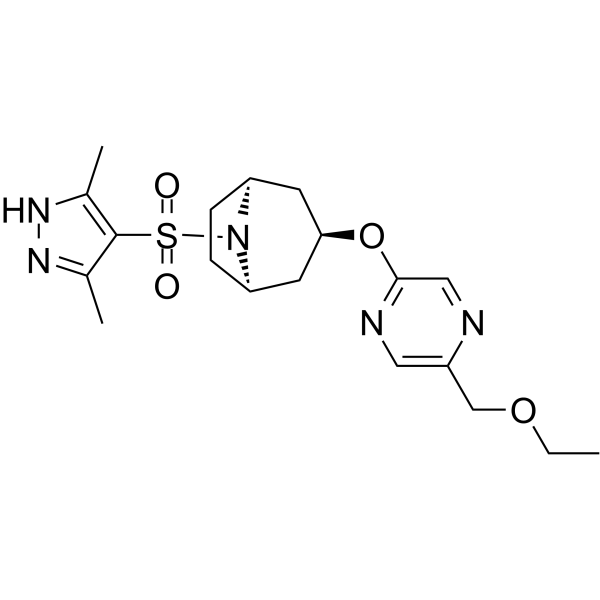
-
- HY-E70012
-
|
|
Endogenous Metabolite
|
Infection
Metabolic Disease
|
|
Penicillinase is a beta-lactamase. beta-lactamase enzymes inactivate beta-lactam antibiotics by hydrolyzing the peptide bond of the characteristic four-membered beta-lactam ring rendering the antibiotic ineffective .
|
-

-
- HY-D1769
-
|
|
Fluorescent Dye
|
Others
|
|
N-hydroxy Rhodamine B amide is a ClO - indicator, which is hydrolyzed to prduce fluorescence in the presence of ClO -. The fluorescence intensity of N-hydroxy Rhodamine B amide is proportional to the product, thus can be used to quantify ClO -.
|
-
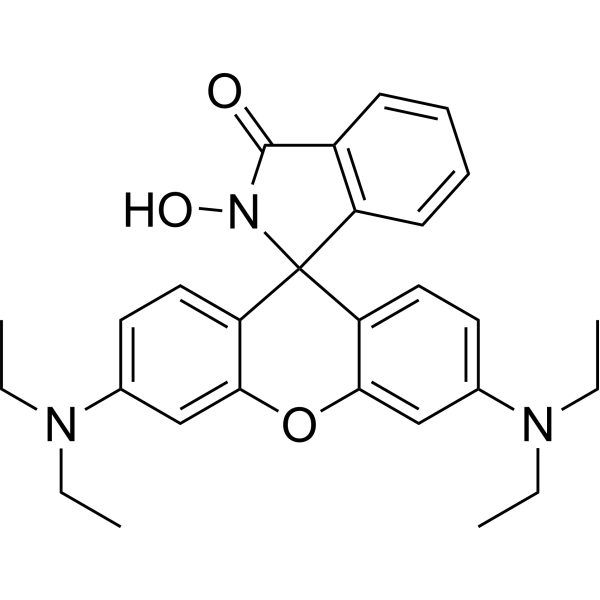
-
- HY-131389
-
|
|
Others
|
Others
|
|
Cholesteryl heptadecanoate is a cholesteryl ester internal standard that accurately determines the concentration of free cholesterol in cells without hydrolyzing triglycerides. Cholesteryl heptadecanoate can be used for the quantitative determination of cholesteryl esters by GC or LC mass spectrometry .
|
-
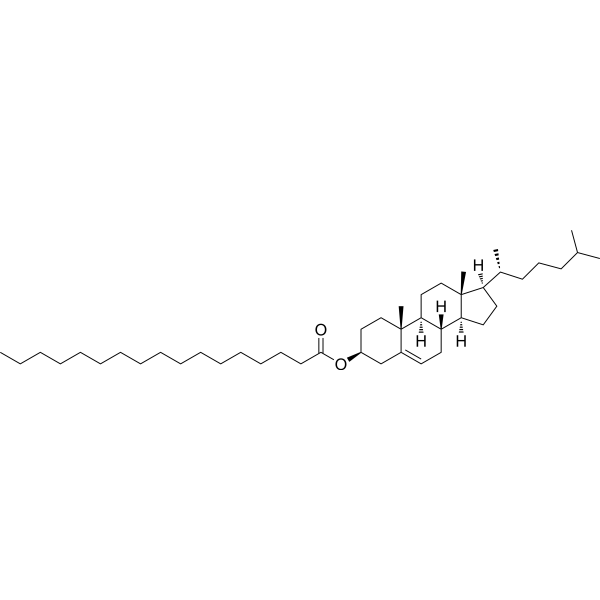
-
- HY-B1278S1
-
|
|
Endogenous Metabolite
|
Metabolic Disease
Cancer
|
|
α-Tocopherol-d6 (acetate) is the deuterium labeled D-α-Tocopherol acetate. D-α-Tocopherol acetate (D-Vitamin E acetate) can be hydrolyzed to d-alpha-tocopherol (VE) and absorbed in the small intestine[1].
|
-
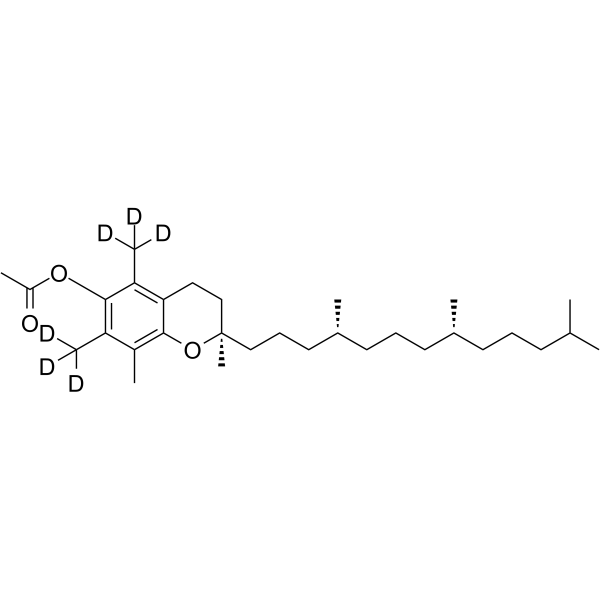
-
- HY-P2863
-
|
DNase II
|
Endonuclease
|
Others
|
|
Deoxyribonuclease II (DNase II) is an endonuclease that hydrolyzes the phosphodiester bonds of deoxyribonucleotides in native and denatured DNA, producing 3' phosphate and 5'-hydroxyl termini. Deoxyribonuclease II works best at acidic pH and is commonly used in biochemical research .
|
-

-
- HY-137337
-
|
|
Fluorescent Dye
|
Others
|
|
Suc-Ala-Ala-Phe-AMC is a fluorogenic chymotrypsin substrate, can be hydrolyzed by endopeptidase. Suc-Ala-Ala-Phe-AMC has been used in both in vivo assays of the acrosome reaction and in vitro enzyme assays .
|
-
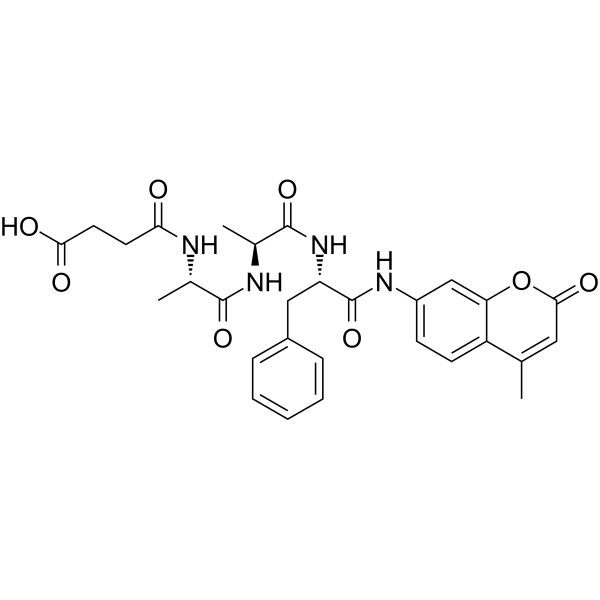
-
- HY-P2999
-
|
ENGase
|
Endogenous Metabolite
|
Others
|
|
Endo-β-N-acetylglucosaminidase (ENGase) is cytosolic deglycosylating enzyme that hydrolyzes the N-linked oligosaccharides. Endo-β-N-acetylglucosaminidase can be used for glycan analysis on glycoproteins and preparation of precursors for glycosylated compounds, is often used in biochemical studies .
|
-

- HY-E70131
-
|
Endo-β-N-acetylglucosaminidase H
|
Others
|
Metabolic Disease
|
|
Endo H, Streptomyces picatus (Endo-β-N-acetylglucosaminidase H), isolated from Streptomyces plicatus, hydrolyzes the central glycosidic bond of the β1, 4-di-N-acetylchitobiose core in asparagine-linked oligosaccharides .
|
-
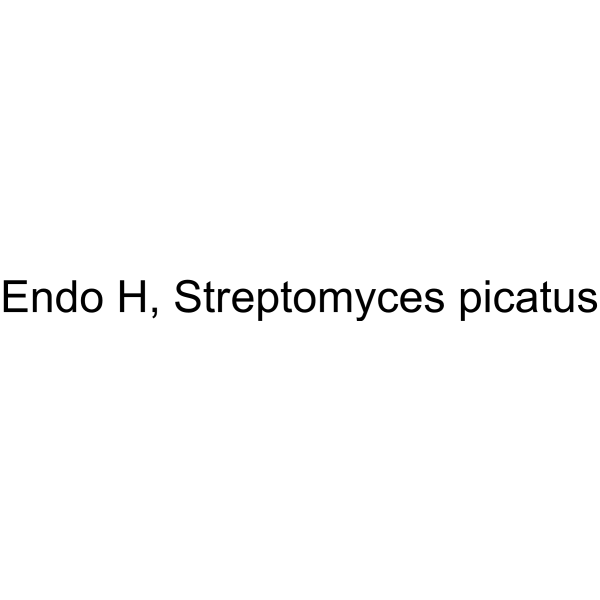
- HY-N2581
-
|
myo-Inositol, hexakis(dihydrogen phosphate) sodium salt; Inositol hexaphosphate sodium salt
|
Endogenous Metabolite
|
Others
|
|
Phytic acid sodium salt (myo-Inositol; hexakis dihydrogen phosphate; Inositol hexaphosphat) is often present in legume seeds with antinutritional effects. Phytic acid sodium salt is a [PO4] 3- storage depot and precursor for other inositol phosphates and pyrophosphates. phytic acid is hydrolyzed by phytases in a stepwise manner in the plant .
|
-
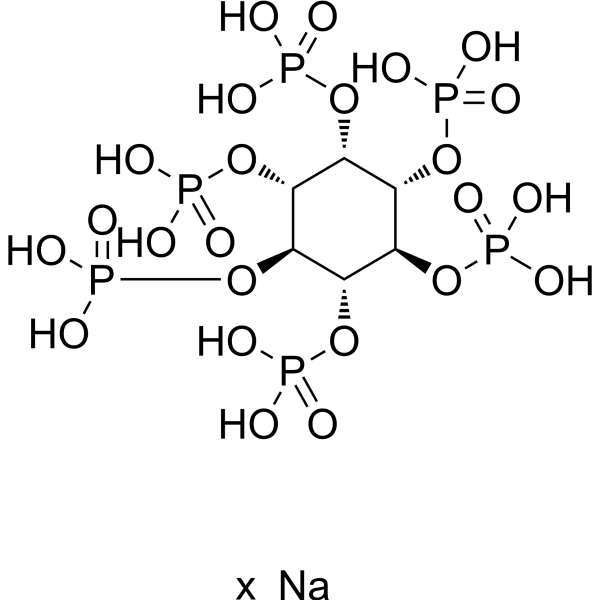
- HY-N7088
-
|
Melitose
|
Endogenous Metabolite
|
Metabolic Disease
|
|
Raffinose (Melitose), a non-digestible short-chain oligosaccharide, is a trisaccharide composed of galactose, glucose, and fructose and can be found in many plants. Raffinose (Melitose) can be hydrolyzed to D-galactose and sucrose by the enzyme α-galactosidase (α-GAL) .
|
-
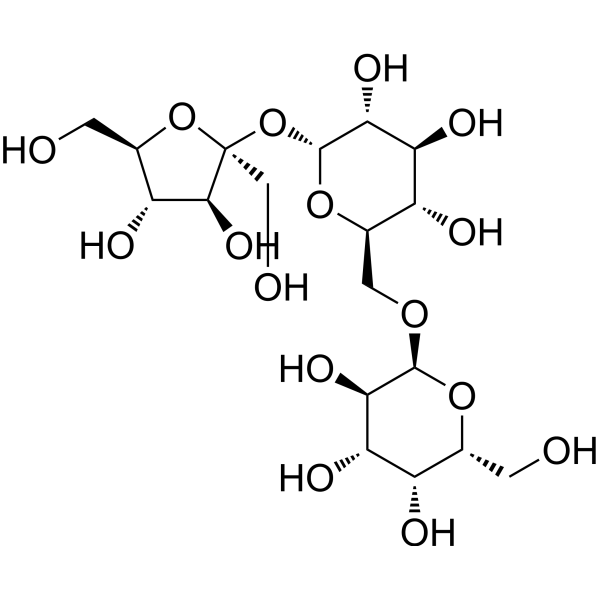
- HY-N10344
-
|
|
Others
|
Cancer
|
|
Glucoarabin is a bioactive glucosinolate. In Hepa1c1c7 cells, hydrolyzed Glucoarabin (hGSL 9) upregulates the phase II detoxification enzyme quinone reductase (NQO1), with no effect on cytochrome P450 (CYP) 1A1 activity .
|
-

- HY-147774
-
|
|
Others
|
Inflammation/Immunology
|
|
NAAA-IN-2 (Compound 9) is a potent and selective inhibitor of NAAA with an IC50 of 50 nM. NAAA is a cysteine amidase which preferentially hydrolyzes the endogenous biolipids palmitoylethanolamide (PEA) and oleoylethanolamide (OEA). NAAA-IN-2 has the potential for the research of inflammation and pain .
|
-
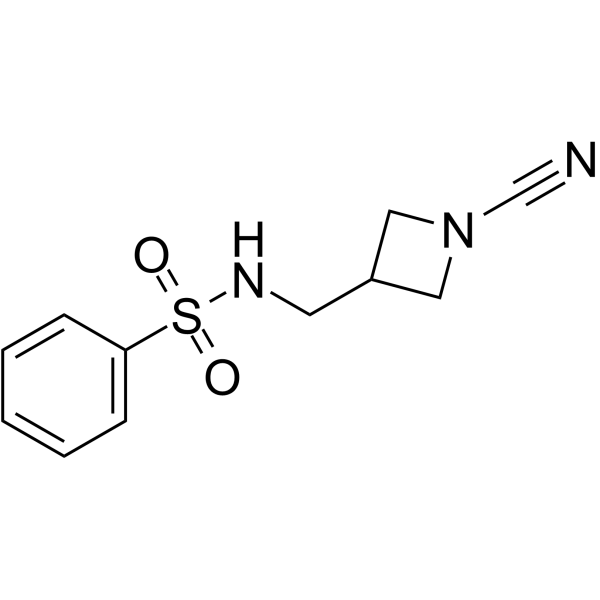
- HY-147773
-
|
|
Others
|
Inflammation/Immunology
|
|
NAAA-IN-1 (Compound 1) is a potent and selective inhibitor of NAAA with an IC50 of 7 nM. NAAA is a cysteine amidase which preferentially hydrolyzes the endogenous biolipids palmitoylethanolamide (PEA) and oleoylethanolamide (OEA). NAAA-IN-1 has the potential for the research of inflammation and pain .
|
-

- HY-147775
-
|
|
Others
|
Inflammation/Immunology
|
|
NAAA-IN-3 (Compound 17a) is a potent and selective inhibitor of NAAA with an IC50 of 50 nM. NAAA is a cysteine amidase which preferentially hydrolyzes the endogenous biolipids palmitoylethanolamide (PEA) and oleoylethanolamide (OEA). NAAA-IN-3 has the potential for the research of inflammation and pain .
|
-
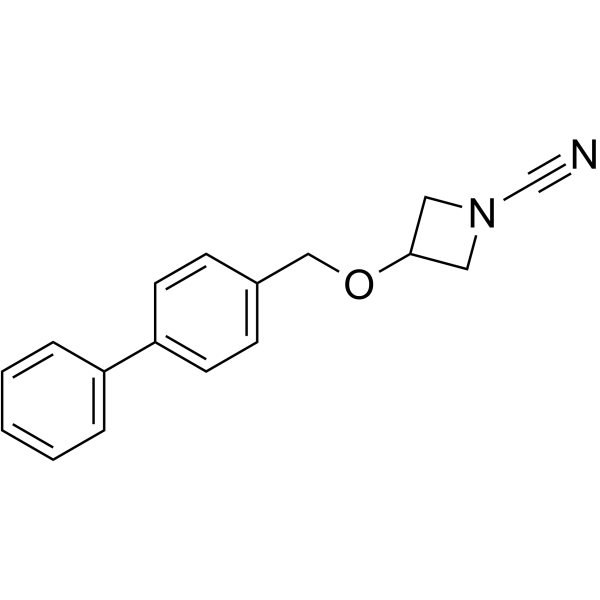
- HY-P2176
-
|
Z-Leu-Arg-Gly-Gly-AMC
|
Biochemical Assay Reagents
|
Others
|
|
Z-LRGG-AMC (Z-Leu-Arg-Gly-Gly-AMC) is a fluorescent substrate that hydrolyzes and releases free fluorescent 7-amino-4-methylcoumarin (AMC). Detection wavelength of AMC: Ex/Em=360/460 nm .
|
-
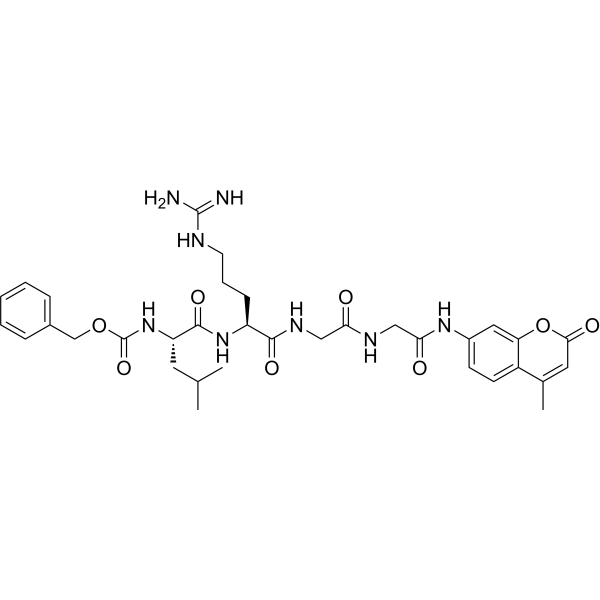
- HY-Y0850H
-
|
PVA (Mw 89000-98000, 99+% hydrolyzed); Poly(Ethenol) (Mw 89000-98000, 99+% hydrolyzed)
|
Biochemical Assay Reagents
|
Others
|
|
Polyvinyl alcohol (Mw 89000-98000, 99+% hydrolyzed) also known as PVA, is a vinyl water-soluble polymer that can be used as a non-ionic surfactant. It can also be used as a biodegradable polymer and can be used in adhesives, coatings, textiles, ceramics and cosmetics .
|
-
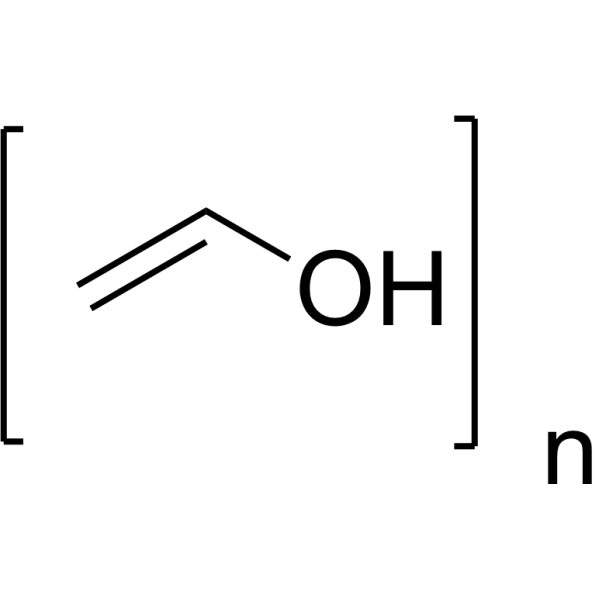
- HY-Y0850N
-
|
PVA (Mw 13000-23000, 98% hydrolyzed); Poly(Ethenol) (Mw 13000-23000, 98% hydrolyzed)
|
Biochemical Assay Reagents
|
Others
|
|
Polyvinyl alcohol (Mw 13000-23000, 98% hydrolyzed), also known as PVA, is a vinyl water-soluble polymer that can be used as a non-ionic surfactant. It can also be used as a biodegradable polymer and can be used in adhesives, coatings, textiles, ceramics and cosmetics .
|
-
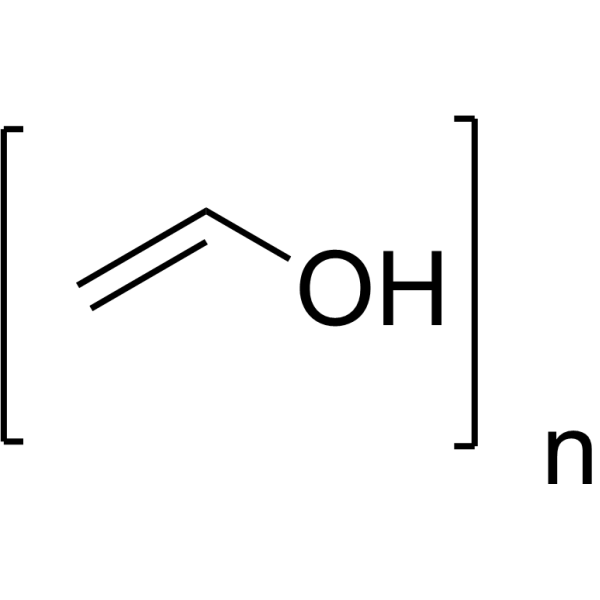
- HY-N10866
-
|
|
Others
|
Cancer
|
|
Phorbol 12-tiglate is a derivative of Phorbol (HY-N2147). Phorbol, a hydrolyzed product of Croton oil, promotes tumor development by activating protein kinase C. Phorbol and its derivatives can be used to construct carcinogenic models in biomedical research .
|
-

- HY-Y0850K
-
|
PVA (Mw 31000-50000, 98-99% hydrolyzed); Poly(Ethenol) (Mw 31000-50000, 98-99% hydrolyzed)
|
Biochemical Assay Reagents
|
Others
|
|
Polyvinyl alcohol (Mw 31000-50000, 98-99% hydrolyzed), also known as PVA, is a vinyl water-soluble polymer that can be used as a non-ionic surfactant. It can also be used as a biodegradable polymer and can be used in adhesives, coatings, textiles, ceramics and cosmetics .
|
-
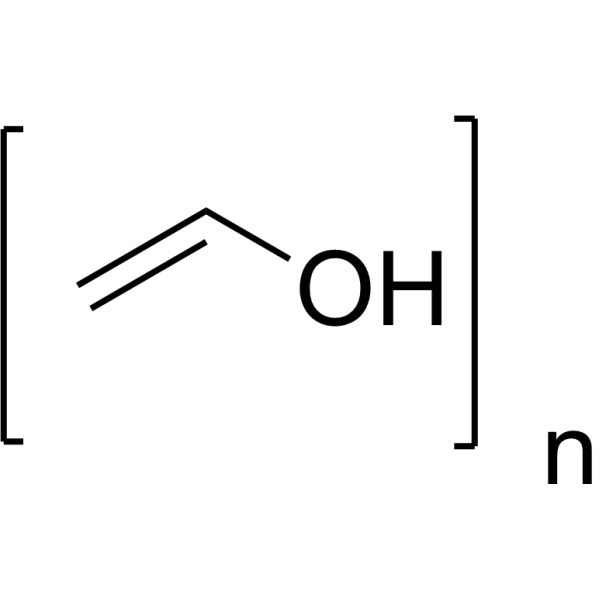
- HY-119972
-
|
|
Parasite
|
Infection
|
|
Diloxanide is an anti-protozoal agent and can be used for the research of asymptomatic-intestinal amebiasis caused by Entamoeba histolytica or some other protozoal infections. Diloxanide is an active luminal amebicide and hydrolyzed in the gastrointestinal tract from its proagent Diloxanide furoate (HY-B1147) .
|
-
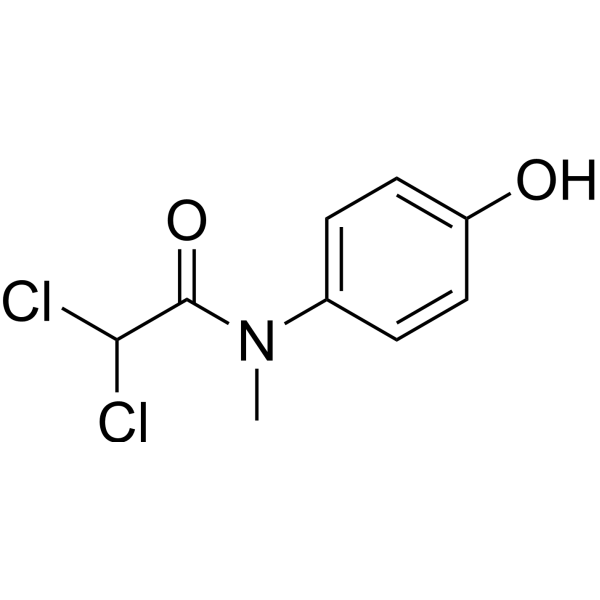
- HY-D1670
-
-
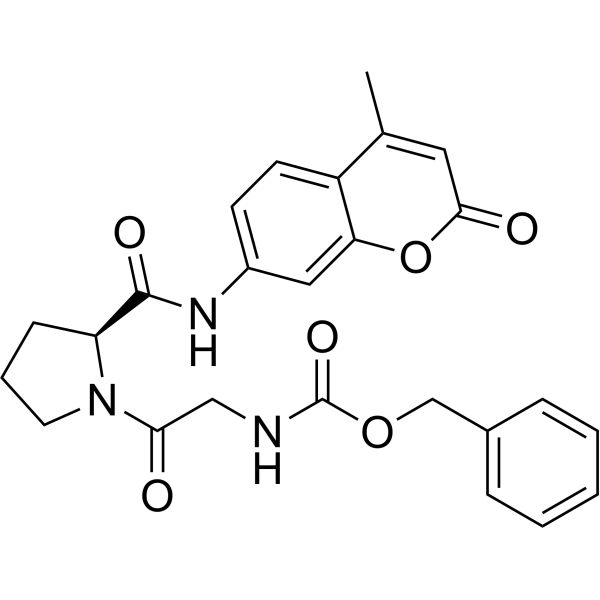
- HY-P2936
-
|
|
Phospholipase
|
Metabolic Disease
|
|
Sphingomyelin phosphodiesterase, Streptomyces sp., a hydrolase, is involved in the sphingomyelin metabolism process. Sphingomyelin phosphodiesterase hydrolyzes the conversion of sphingomyelin to phosphocholine and ceramide. Sphingomyelin phosphodiesterase also plays an important role in cellular differentiation, various immune and inflammatory responses, and intracellular cholesterol trafficking and metabolism .
|
-

- HY-116016
-
|
L-DOPA ethyl ester; Levodopa ethyl ester
|
Dopamine Receptor
Drug Metabolite
|
Neurological Disease
|
|
Etilevodopa (L-Dopa ethyl ester), an ethyl-ester proagent of Levodopa, is rapidly hydrolyzed to Levodopa and ethanol by nonspecific esterases in the gastrointestinal tract. Etilevodopa is used for the treatment of Parkinson disease (PD). Levodopa is the direct precursor of dopamine and is a suitable proagent as it facilitates CNS penetration and delivers dopamine .
|
-
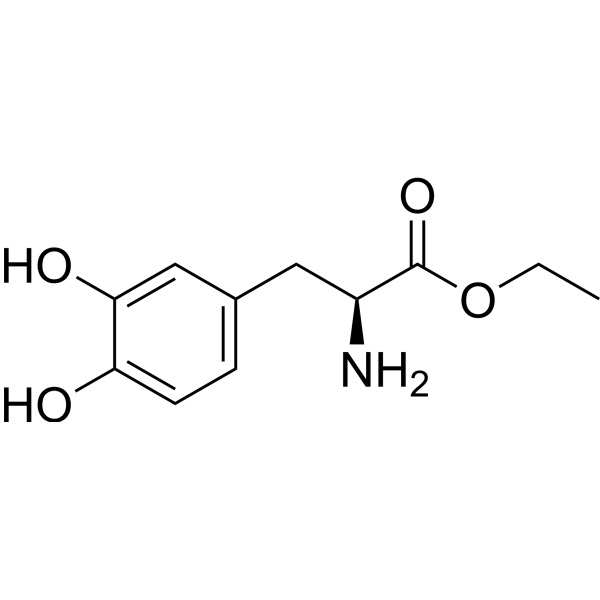
- HY-116016A
-
|
L-DOPA ethyl ester hydrochloride; Levodopa ethyl ester hydrochloride
|
Dopamine Receptor
Drug Metabolite
|
Neurological Disease
|
|
Etilevodopa (L-Dopa ethyl ester) hydrochloride, an ethyl-ester proagent of Levodopa, is rapidly hydrolyzed to Levodopa and ethanol by nonspecific esterases in the gastrointestinal tract. Etilevodopa hydrochloride is used for the treatment of Parkinson disease (PD). Levodopa is the direct precursor of dopamine and is a suitable proagent as it facilitates CNS penetration and delivers dopamine .
|
-
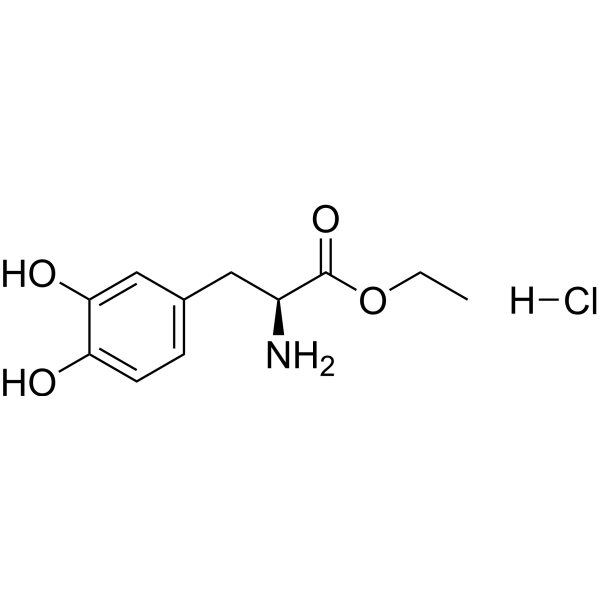
- HY-P2879
-
|
|
Endogenous Metabolite
|
Metabolic Disease
|
|
Cholesterol esterase, Pseudomonas is an enzyme that hydrolyzes cholesterol ester to cholesterol and free fatty acid in the intestinal lumen. Cholesterol synthesized in the acinar cells and is stored in zymogen granules. Cholesterol esterase is also known as bile salt-stimulated lipase and carboxy ester lipasea, acts function for acceleration of cholesterol absorption .
|
-
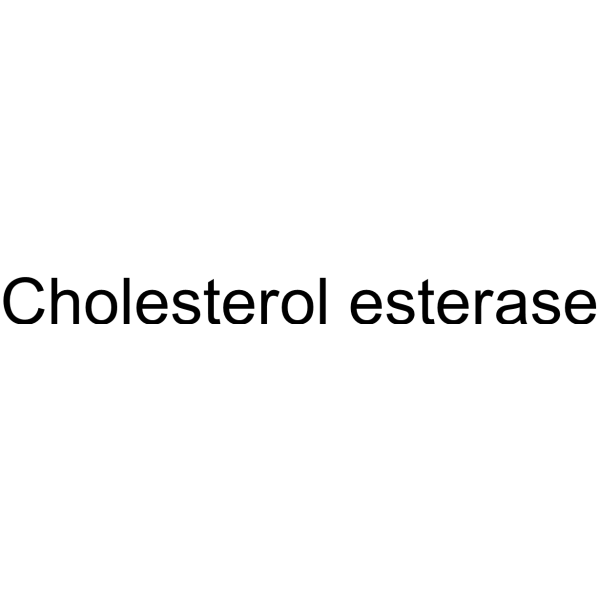
- HY-108858
-
|
rhDNase
|
Others
|
Others
|
|
Dornase alfa (rhDNase) is a recombinant human deoxyribonuclease I (rhDNase), an enzyme which selectively cleaves DNA. Dornase alfa hydrolyzes the DNA present in sputum/mucus and reduces viscosity in the lungs, promoting improved clearance of secretions. Dornase alfa plays an important role in cystic fibrosis .
|
-

- HY-P4556
-
|
|
Biochemical Assay Reagents
|
Others
|
|
H-Phe-Gly-His-p-nitro-Phe-Phe-Ala-Phe-OMe is a polypeptide that can be hydrolyzed by Rennin (HY-P2810). H-Phe-Gly-His-p-nitro-Phe-Phe-Ala-Phe-OMe is commonly used as a biochemical reaction reagent .
|
-
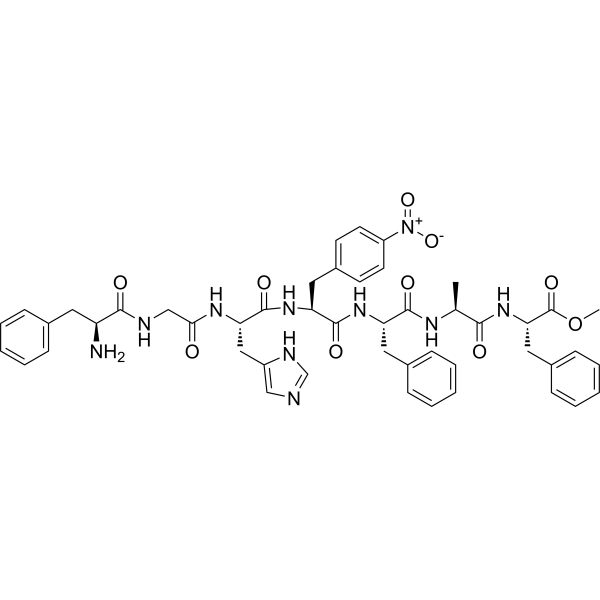
- HY-P2974
-
|
EC 3.2.1.35; Pancreatopeptidase E
|
Elastase
|
Metabolic Disease
|
|
Elastase, Porcine pancreas (EC 3.2.1.35) is a single polypeptide chain of 240 amino acid residues, derived from pig pancreas. Elastase, Porcine pancreas is a serine protease that can hydrolyze proteins and polypeptide. Elastase from porcine pancreas can induce emphysema in hamsters .
|
-
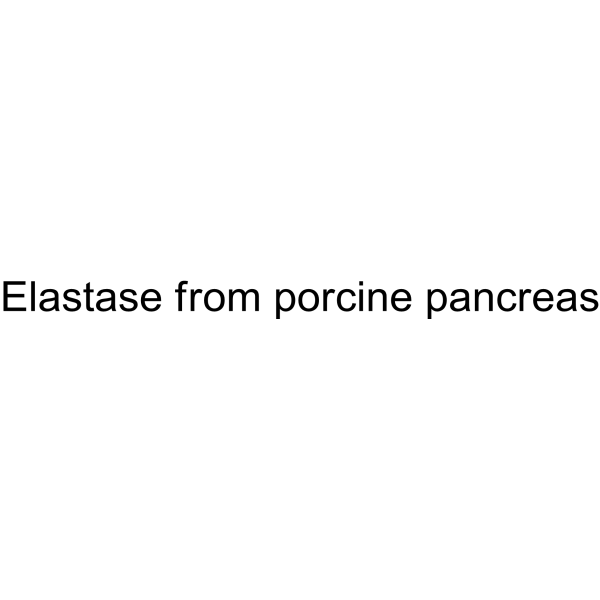
- HY-118520
-
|
|
Prostaglandin Receptor
|
Endocrinology
|
|
16-Phenoxy tetranor Prostaglandin F2α methyl ester is a metabolically stable form of Prostaglandin F2α that can binds to FP receptor. 16-Phenoxy tetranor Prostaglandin F2α methyl ester serves as prodrug that can be hydrolyzed to generate bioactive free acid .
|
-

- HY-D0047
-
5-CFDA
2 Publications Verification
5-Carboxyfluorescein diacetate
|
Fluorescent Dye
|
Others
|
|
5-CFDA is a common aliphatic luciferin-line organism. CFDA conducts free diffusion into cells, and then it is hydrolyzed into carboxyl fluorescein (CF) by intracellular non-specific lipase. CF containing portion contains an additional negative charge so that it is better retained in cells, compared to fluorescein dyes .
|
-
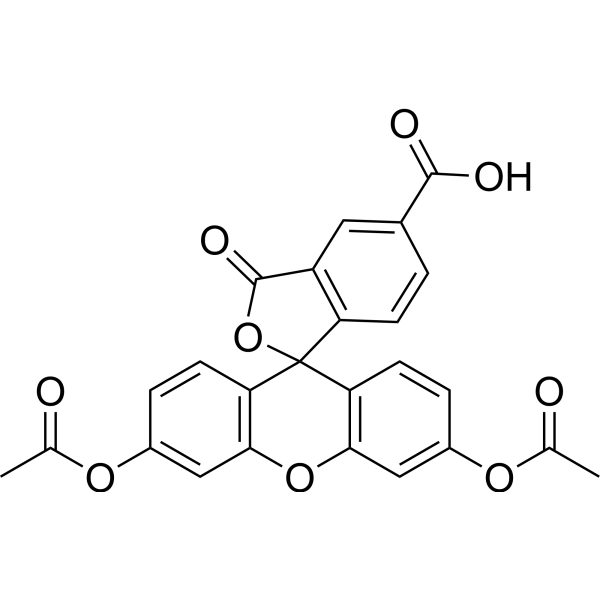
- HY-108913
-
|
|
Beta-lactamase
Antibiotic
|
Infection
|
|
Nitrocefin is a chromogenic β-lactamase substrate that undergoes a distinctive color change from yellow to red as the amide bond in the β-lactam ring is hydrolyzed by β-lactamase. Nitrocefin is used in competitive inhibition studies in developmental work on β-lactamase-resistant antibiotics .
|
-
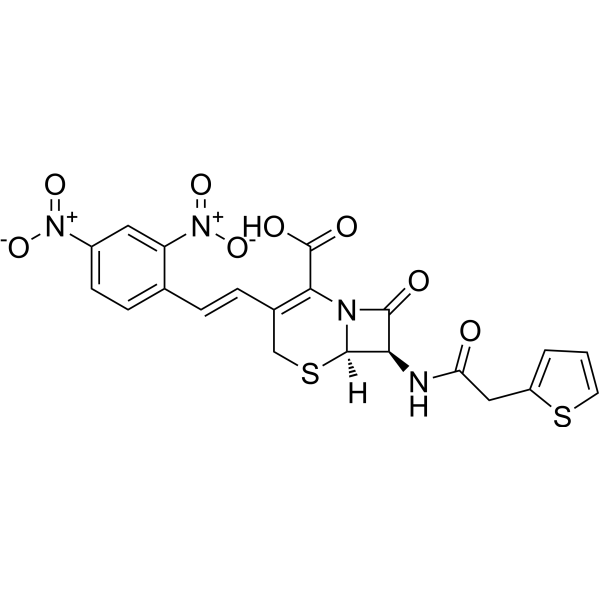
- HY-P2831
-
|
CESs
|
Endogenous Metabolite
|
Metabolic Disease
|
|
Esterase, pig liver (CESs), namely carboxylate hydrolases, are widely distributed in nature, commonly found in mammalian liver, and often used in biochemical research. Esterase catalyzes the hydrolysis of a variety of endogenous and exogenous substrates, including esters, thioesters, carbamates, and amides, hydrolyzing carboxylic acid esters to the corresponding alcohols and carboxylic acids .
|
-
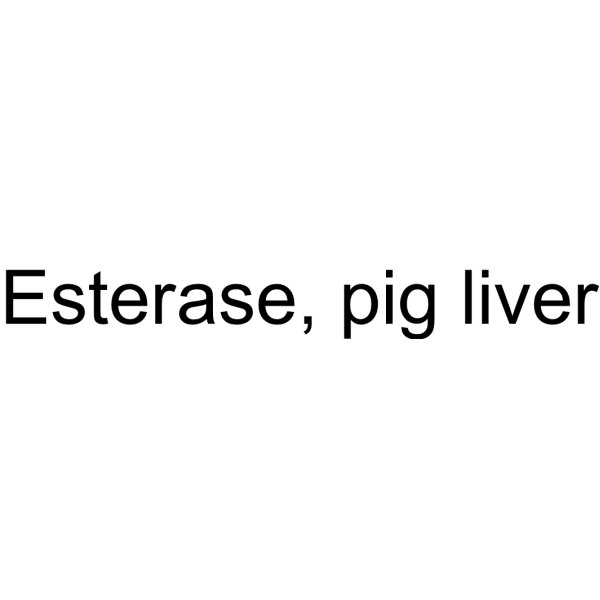
- HY-153126
-
|
|
Biochemical Assay Reagents
|
Others
|
|
Yeast extract is a concentrate of the soluble part of yeast, especially Saccharomyces cerevisiae. The main nutritional components of yeast extract include partly hydrolyzed protein with 35-40% of free amino acid, and it also contain B vitamins and some trace elements. Yeast extract can be used as nutrients for bacterial culture media .
|
-
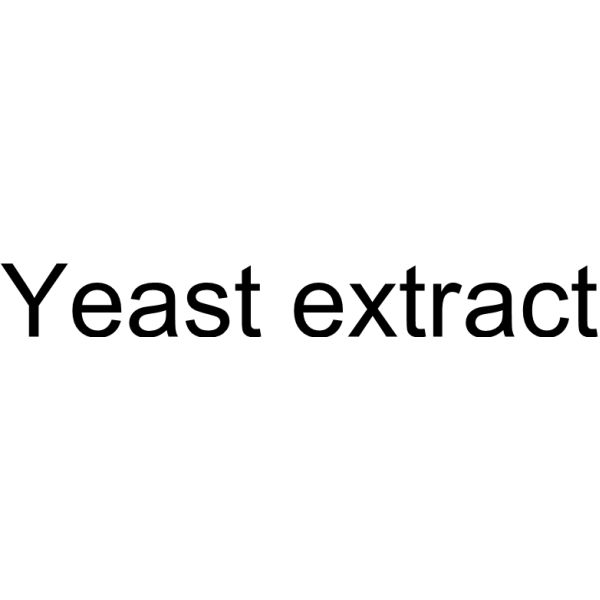
- HY-D0721
-
|
6-Carboxyfluorescein diacetate
|
Fluorescent Dye
|
Others
|
|
6-CFDA is a common aliphatic luciferin-line organism. CFDA conducts free diffusion into cells, and then it is hydrolyzed into carboxyl fluorescein (CF) by intracellular non-specific lipase. CF containing portion contains an additional negative charge so that it is better retained in cells, compared to fluorescein dyes .
|
-
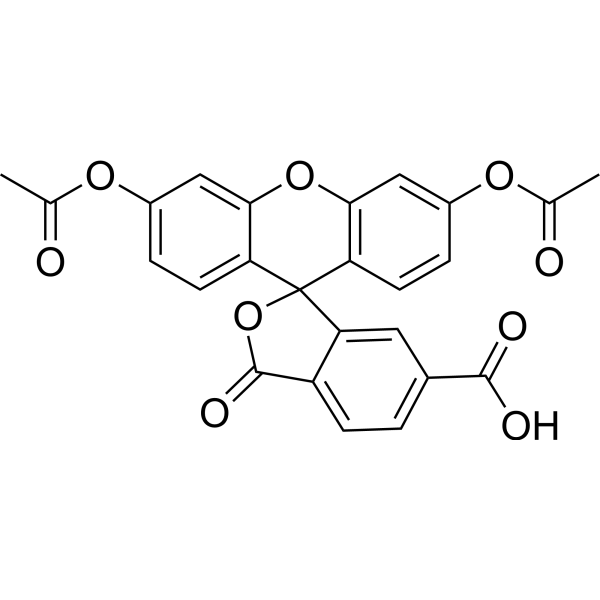
- HY-D0722
-
|
5-(6)-Carboxyfluorescein diacetate; CFDA
|
Fluorescent Dye
|
Others
|
|
5(6)-CFDA is a common aliphatic luciferin-line organism. CFDA conducts free diffusion into cells, and then it is hydrolyzed into carboxyl fluorescein (CF) by intracellular non-specific lipase. CF containing portion contains an additional negative charge so that it is better retained in cells, compared to fluorescein dyes .
|
-
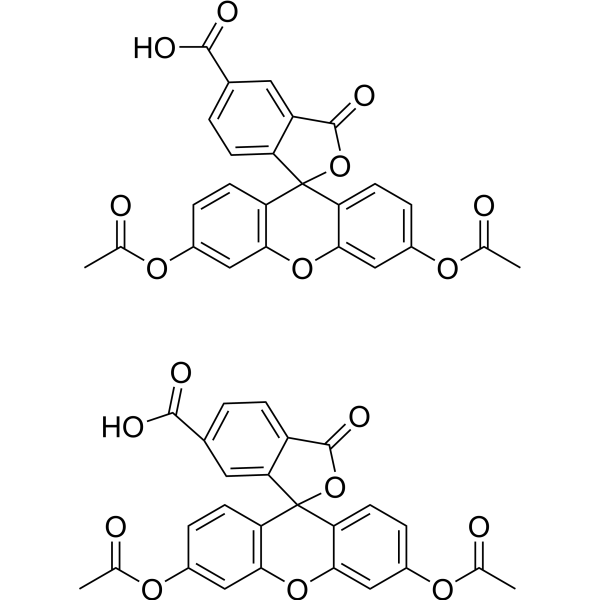
- HY-137827
-
|
p-Nitrophenyl β-D-Cellobioside
|
Fluorescent Dye
|
Others
|
|
4-Nitrophenyl β-D-Cellobioside (p-Nitrophenyl β-D-cellobioside) is a cellotriose analog, a chromogenic substrate for the detection of cellulase activity. Exoglucanases, endoglucanases, and β-glucosidases hydrolyze 4-Nitrophenyl β-D-Cellobioside to yield p-nitrophenol (PNP) .
|
-
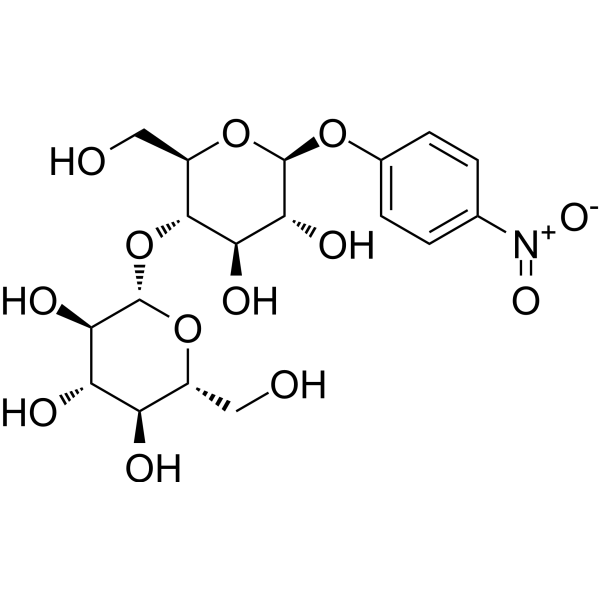
- HY-B0577
-
|
PHXA41
|
Prostaglandin Receptor
|
Others
|
|
Latanoprost (PHXA41) is a prostaglandin F2α analogue and can be used for glaucoma research. Latanoprost can effectively pass through cornea and be hydrolyzed by esterase to latanoprost acid. latanoprost acid is an F-prostaglandin (FP) receptor agonist, and can effectively reduce intraocular pressure (IOP) by increasing the outflow of aqueous humor through uvea .
|
-
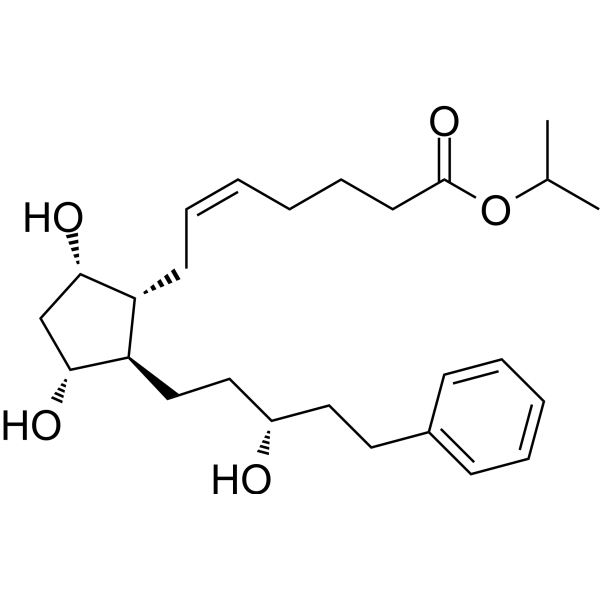
- HY-D1688
-
|
|
Fluorescent Dye
|
Others
|
|
Flubida-2 is a cell permeable dye which can be hydrolyzed to Fubi-2 by endoesterases in cells (after hydrolysis, Ex=492 nm, Em=517 nm). Flubida-2 can be used to detect pH at a specific site in a cell organelle by directing the probe to where avidin fusion proteins are located .
|
-
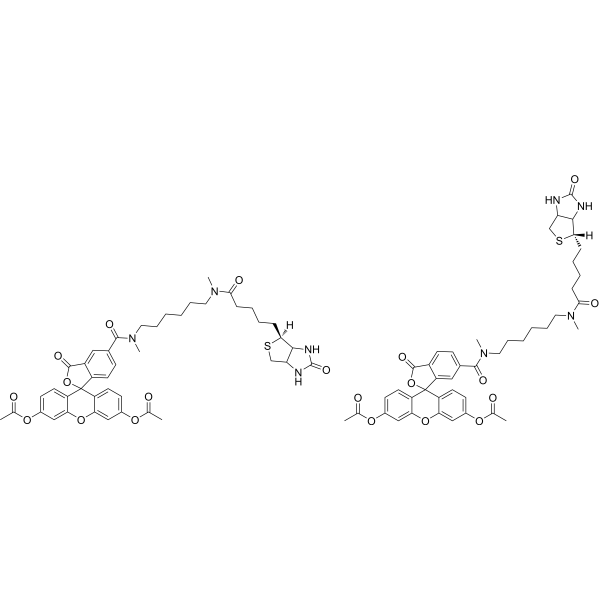
- HY-P2963
-
|
|
Endogenous Metabolite
|
Others
|
|
Nuclease P1 is a single-stranded specific endonuclease, it hydrolyzes nucleic acids into 5'-mononucleotides and cleaves the single-stranded region of a double-stranded nucleic acid. Nuclease P1 is one of the most well-known single stranded specific nucleases in the field of molecular biology, it is widely used in the pharmaceutical and food industries .
|
-

- HY-P4550
-
|
|
Endogenous Metabolite
|
Metabolic Disease
|
|
H-Hyp-Gly-OH is a dipeptide containing hydroxyproline and glycine. H-Hyp-Gly-OH promotes the growth of mouse primary fibroblasts on collagen gel. H-Hyp-Gly-OH has potential applications in improving skin by ingesting hydrolyzed collagen. H-Hyp-Gly-OH can be used for metabolic research .
|
-
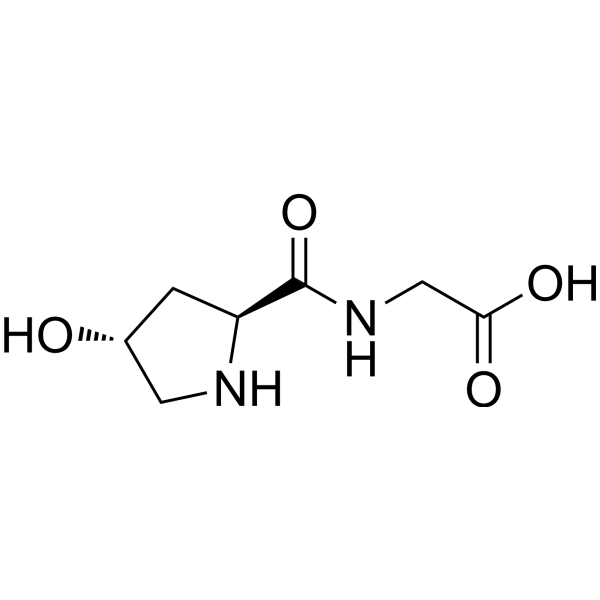
- HY-P2746
-
|
EC 3.4.2.2
|
Endogenous Metabolite
|
Metabolic Disease
|
|
Carboxypeptidase B, Porcine pancreas (EC 3.4.2.2) is a peptide exonuclease that can specifically degrade peptide chains. Carboxypeptidase B is progressively degraded from the C-terminal to release free amino acids. Carboxypeptidase B hydrolyzes only peptide bonds with basic amino acids (such as arginine and lysine) as C-terminal residues .
|
-
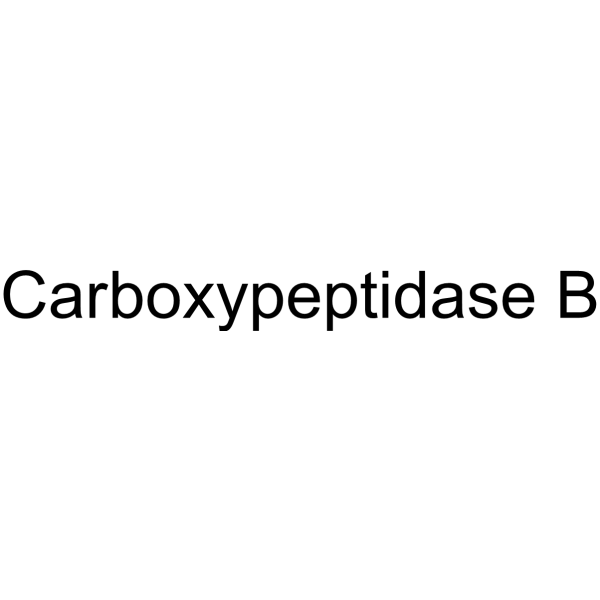
- HY-134429
-
|
|
Biochemical Assay Reagents
|
Others
|
|
p-Nitrophenyl α-L-arabinopyranoside is a biochemical reagent. p-Nitrophenyl α-L-arabinopyranoside can be hydrolyzed by recombinant BgaA (rBgaA, isolated from E. coli BL21 (DE3) strain harboring pEBGA29). p-Nitrophenyl α-L-arabinopyranoside has potential application in enzyme activity detection .
|
-
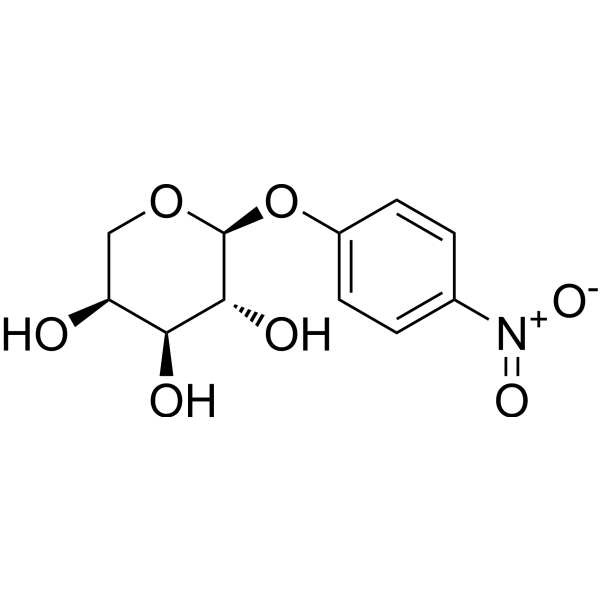
- HY-P4580
-
|
|
Proteasome
|
Others
|
|
Suc-Ala-Ala-Pro-Phe-SBzl can be used as the substrate of rat intestinal mast cell protease (RMCP I), rat skeletal muscle mast cell protease (RMCP II) and Chymotrypsin (HY-108910). Suc-Ala-Ala-Pro-Phe-SBzl can be hydrolyzed by glycine (R208G) .
|
-
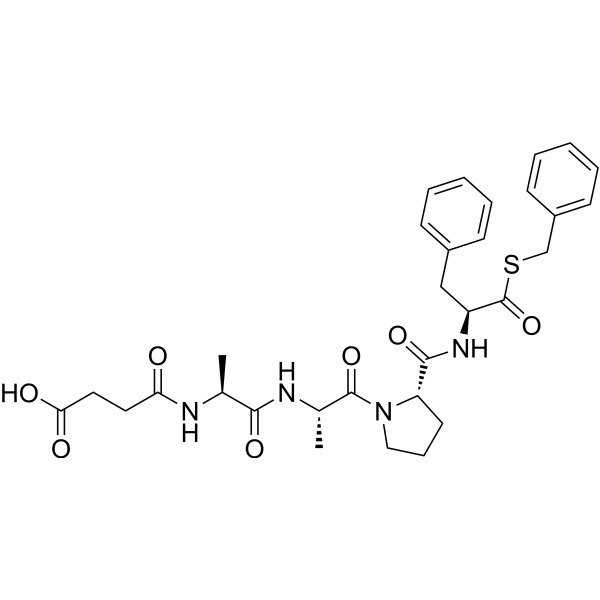
- HY-E70201
-
|
EC 3.4.2.2 (MS grade)
|
Endogenous Metabolite
|
Others
|
|
Carboxypeptidase B (MS grade) is a peptide exonuclease that can specifically degrade peptide chains. Carboxypeptidase B (MS grade) is progressively degraded from the C-terminal to release free amino acids. Carboxypeptidase B (MS grade) hydrolyzes only peptide bonds with basic amino acids (such as arginine and lysine) as C-terminal residues .
|
-
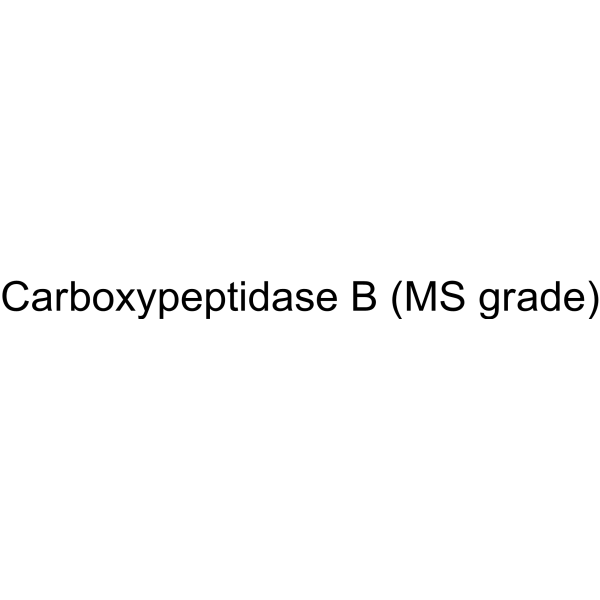
- HY-B0815S
-
|
|
Cholinesterase (ChE)
|
Neurological Disease
|
|
Chlorpyrifos-d10 is the deuterium labeled Chlorpyrifos. Chlorpyrifos is an organophosphate insecticide that is classified as a phosphorothionate. The oxon metabolite of Chlorpyrifos is an inhibitor of acetylcholinesterase (AChE), affecting neurological function in insects, humans, and other animals. The Chlorpyrifos oxon (CPO) metabolite is hydrolyzed by the plasma enzyme paraoxonase 1 (PON1), and susceptibility to neurotoxicity associated with CPO exposure is mitigated by PON1 overexpression.
|
-
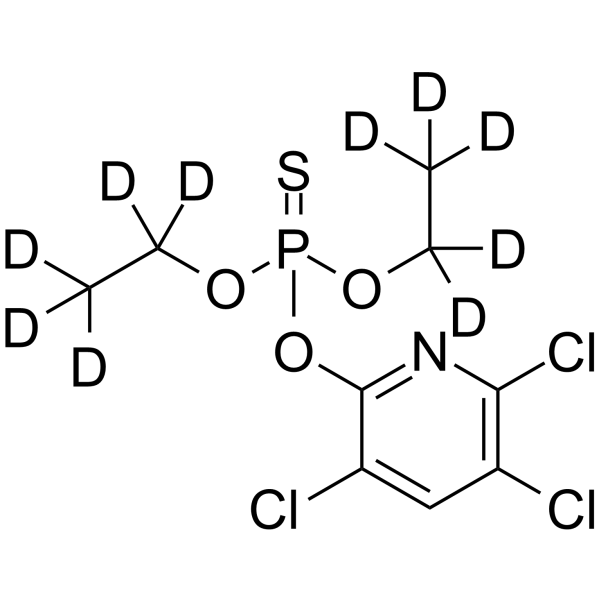
- HY-D0859
-
|
|
Biochemical Assay Reagents
|
Others
|
|
MOPS are commonly used as buffers in biology. MOPS buffer maintains the pH of mammalian cell culture media. MOPS and Tris buffer also have inhibitory effects on TfCut2 and LCC hydrolases, inhibiting the rate of hydrolyzing PET films. MOPS may also interfere with calcium binding, translocation, and utilization in vascular smooth muscle cells .
|
-
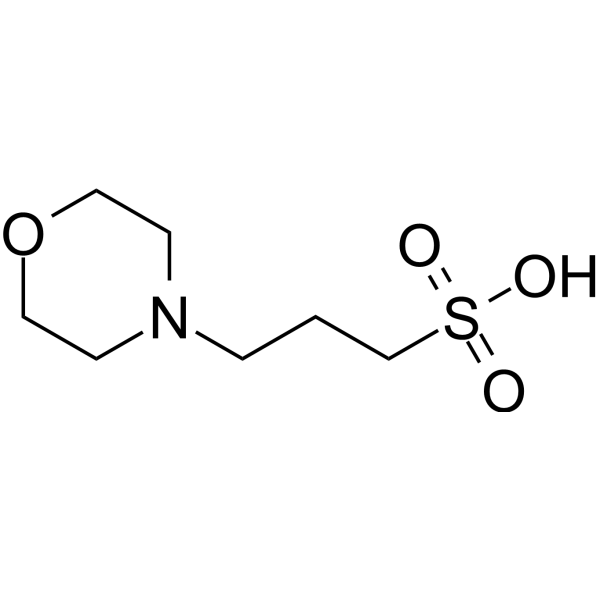
- HY-143714
-
|
|
Cathepsin
|
Inflammation/Immunology
|
|
Cathepsin K inhibitor 2 is a potent inhibitor of cathepsin K. Cathepsin K, Cat K is a cysteine protease expressed under the control of CTSK gene and closely related to osteoporosis, whose main function is to hydrolyze collagen. Cathepsin K inhibitor 2 has the potential for the research of osteoarthfitis (extracted from patent WO2021147882A1, compound 78) .
|
-
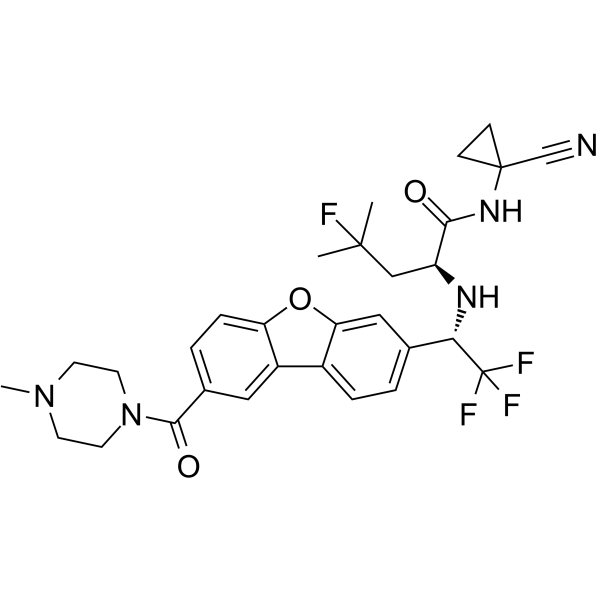
- HY-P2753
-
|
SP
|
Endogenous Metabolite
|
Others
|
|
Sucrose phosphorylase is a bacterial transglucosidase that catalyzes the conversion of sucrose and phosphate into α-D-glucose-1-phosphate and D-fructose. The glucosylated Sucrose phosphorylase can also be hydrolyzed into α-D-glucose, or transfer the glucoyl to the hydroxyl group of the receptor, and then decomposed into new α-D-glucoside products. The enzymatic activity of base phosphorylase to substrate and product is weak .
|
-
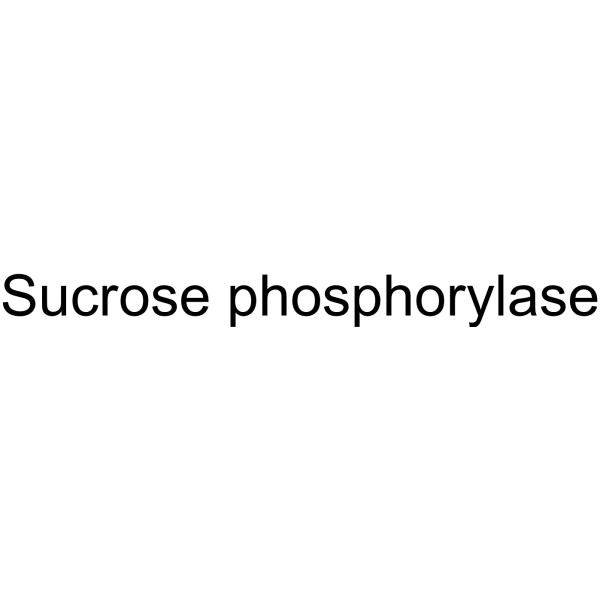
- HY-P3004
-
|
Lyticase
|
Endogenous Metabolite
|
Others
|
|
Endo-1,3-β-glucanase specifically hydrolyzes β-1,3-glycosidic bonds randomly along the β-glucan chain, and the final product is mainly glucan oligosaccharide. Endo-1,3-β-glucanase is produced by a variety of fungi, is often used in biochemical studies .
|
-
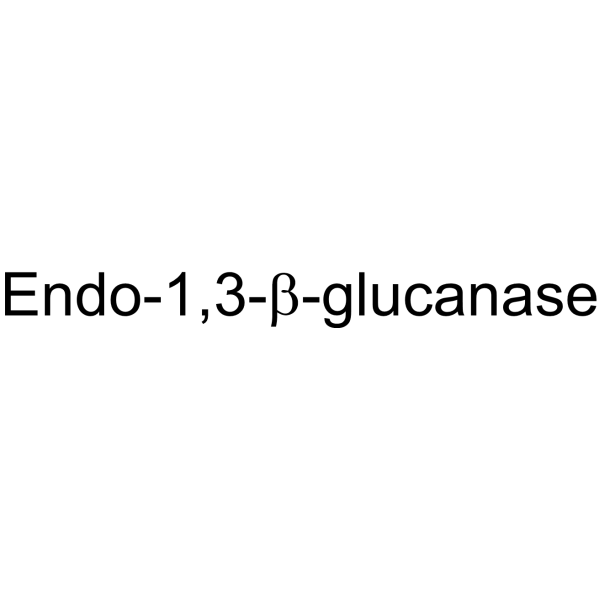
- HY-E70077
-
|
|
Endogenous Metabolite
|
Infection
Metabolic Disease
|
|
Penicillinase (from calf stomach) is an enzyme that degrades penicillin by hydrolyzing the cyclic amide bonds in the lactam ring of penicillin, which can inactivate penicillin. Penicillinase (from calf stomach) can be isolated from penicillin resistant strains. Penicillinase (from calf stomach) has potential application as a marker for steroid hormone enzyme linked immunosorbent assay .
|
-

- HY-130767
-
|
|
Biochemical Assay Reagents
|
Others
|
|
Naphthol AS-TR Phosphate is a water-soluble dye commonly used as an enzyme substrate in various biochemical assays to detect alkaline phosphatase activity. Naphthol AS-TR Phosphate has unique chemical properties that allow it to be hydrolyzed by alkaline phosphatase to form a colored product that can be detected spectrophotometrically. This makes it a useful tool for monitoring enzyme activity in biological samples such as serum or urine.
|
-
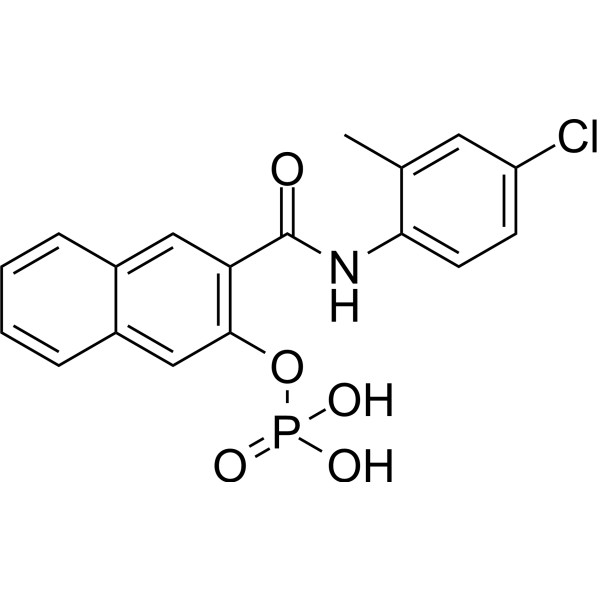
- HY-130575
-
|
|
Fluorescent Dye
|
Others
|
|
Fura-FF AM is a cell-permeable acetoxymethyl ester of fura-FF, a dluorescent calcium indicator. Fura-FF AM is hydrolyzed by intracellular esterases to release fura-FF in cells. Fura-FF is a difluorinated derivative of the calcium indicator fura-2. Compared to fura-2, fura-FF has a low affinity for calcium and is suitable for studying compartments with high concentrations of calcium.
|
-
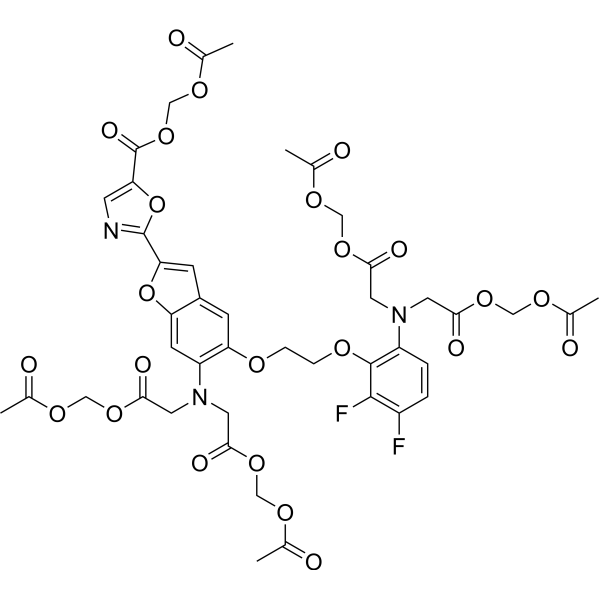
- HY-E70132
-
|
Endo D
|
Others
|
Metabolic Disease
|
|
Endo-β-N-acetylglucosaminidase D (Endo D), isolated from Streptococcus pneumoniae. Endo-β-N-acetylglucosaminidase D hydrolyzes Fc N-glycan of intact IgG antibodies after sequential removal of the sialic acid, galactose, and internal GlcNAc residues in the N-glycan. Endo-β-N-acetylglucosaminidase D possesses transglycosylation activity with sugar oxazoline as the donor substrate .
|
-
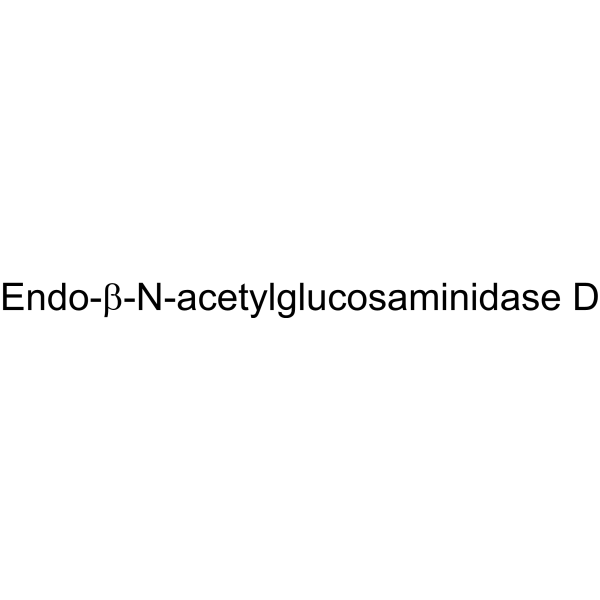
- HY-P10007
-
|
Z-GPFL-CHO
|
Proteasome
|
Cancer
|
|
Z-Gly-Pro-Phe-Leu-CHO (Z-GPFL-CHO) is a tetrapeptide aldehyde that acts as a highly selective and potent proteasomal inhibitor (Ki = 1.5 µM for branched chain amino acid preferring, 2.3 µM for small neutral amino acid preferring, and 40.5 µM for chymotrypsin-like activities; IC50 = 3.1 µM for peptidyl-glutamyl peptide hydrolyzing activity) .
|
-
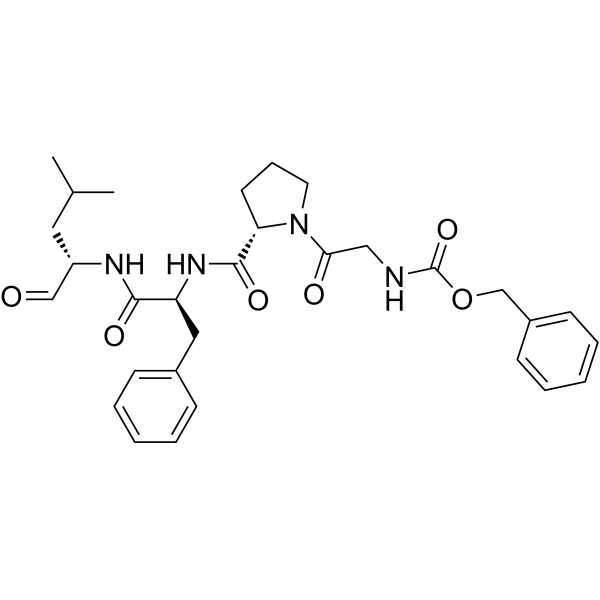
- HY-130767A
-
|
|
Biochemical Assay Reagents
|
Cancer
|
|
Naphthol AS-TR Phosphate disodium is a water-soluble dye commonly used as an enzymatic substrate in various biochemical assays to detect alkaline phosphatase activity. Naphthol AS-TR Phosphate disodium has unique chemical properties that allow it to be hydrolyzed by alkaline phosphatase, forming a colored product that can be detected spectrophotometrically. This makes it a useful tool for monitoring enzyme activity in biological samples such as serum or urine.
|
-
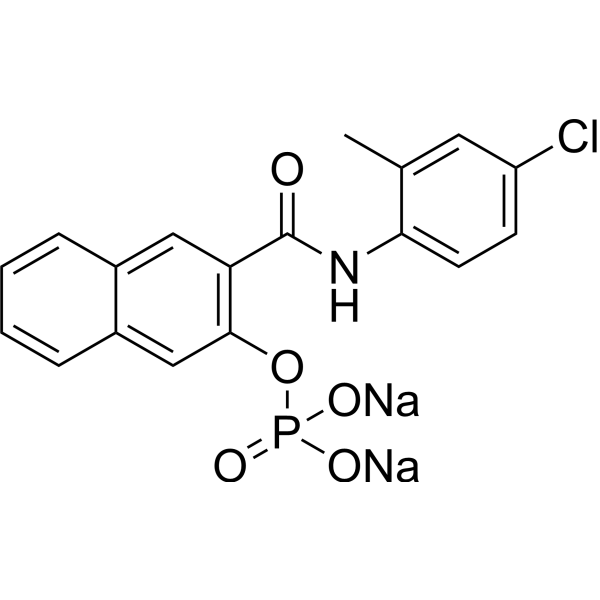
- HY-129047
-
Trypsin
4 Publications Verification
|
Ser/Thr Protease
Protease Activated Receptor (PAR)
|
Infection
Inflammation/Immunology
|
|
Trypsin is a serine protease enzyme, and hydrolyzes proteins at the carboxyl side of the Lysine or Arginine. Trypsin activates PAR2 and PAR4. Trypsin induces cell-to-cell membrane fusion in PDCoV infection by the interaction of S glycoprotein of PDCoV and pAPN. Trypsin also promotes cell proliferation and differentiation. Trypsin can be used in the research of wound healing and neurogenic inflammation .
|
-
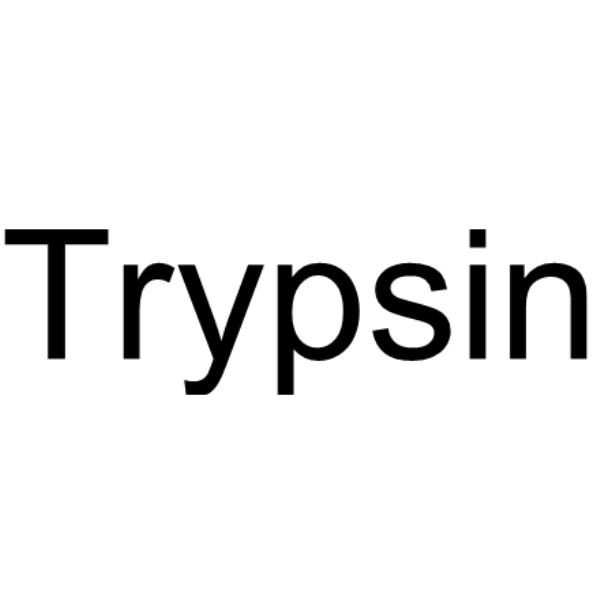
- HY-146696
-
|
|
Epoxide Hydrolase
|
Cardiovascular Disease
Neurological Disease
Cancer
|
|
mEH-IN-1 (Compound 62) is a potent microsomal epoxide hydrolase (mEH) inhibitor with the IC50 of 2.2 nM. The mEH is a mammalian α/β-fold hydrolase enzyme, expressed in almost all tissues, hydrolyzes a wide range of epoxide containing molecules. The mEH is mainly localized in the endoplasmic reticulum (ER) of eukaryotic cells. mEH-IN-1 can be used for the research of preeclampsia, hypercholanemia and cancer .
|
-
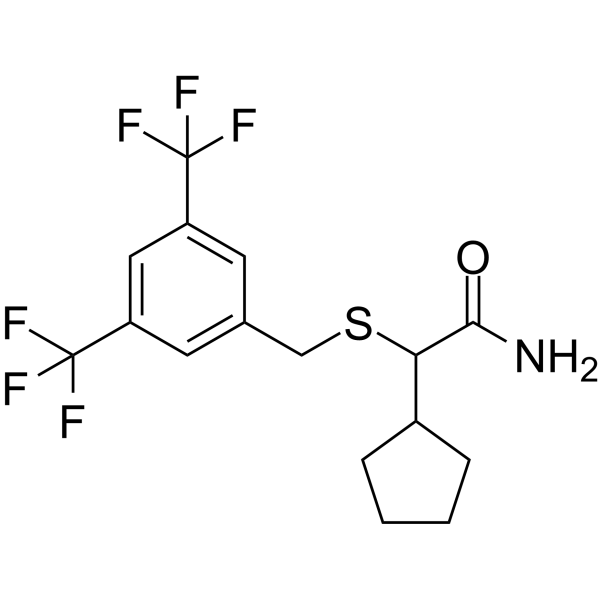
- HY-D0041
-
Calcein-AM
Maximum Cited Publications
37 Publications Verification
Calcein acetoxymethyl ester
|
Fluorescent Dye
|
Cancer
|
|
Calcein AM, has cell membrane permeability and can easily enter the cell. Calcein AM has no fluorescence and is hydrolyzed by endogenous esterase in the cell to produce polar molecule Calcein (Calcein), which has strong negative charge and cannot permeate the cell membrane. Calcein can emit strong green fluorescence, so it is often used with Propidium Iodide for cell viability/virulence detection, excitation/emission wavelength: 494/515 nm .
|
-
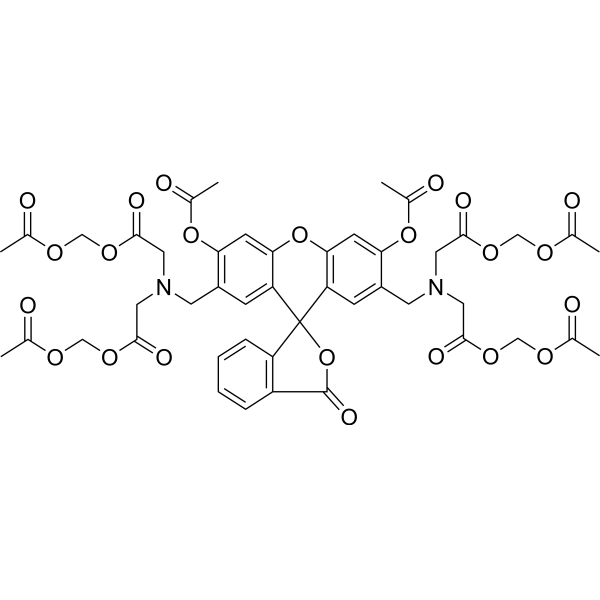
- HY-D1510
-
|
|
Biochemical Assay Reagents
|
Others
|
|
4-Nitrophenyl 2-O-(β-L-Fucopyranosyl)-β-D-Galactopyranoside is a synthetic chromogenic substrate and can be used in the assay of α-fucosidases which hydrolyze the glycosidic linkage Fuc α1-2Gal. The assay is based on the sequential action of α-fucosidase and an exogenously added exo-β-d-galactosidase to release the easily measurable p-nitrophenol moiety .
|
-
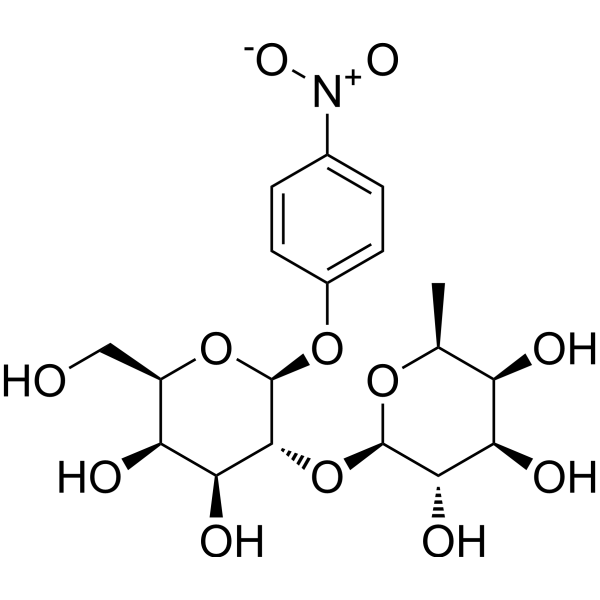
- HY-106991A
-
|
S-303 dihydrochloride
|
HIV
Bacterial
|
Infection
|
|
Amustaline (S-303) dihydrochloride, a nucleic acid-targeted alkylator, is an efficient pathogen inactivation agent for blood components containing red blood cells. Amustaline dihydrochloride has three components: an acridine anchor (an intercalator that targets nucleic acids non-covalently), an effector (a bis-alkylator group that reacts with nucleophiles), and a linker (a small flexible carbon chain containing a labile ester bond that hydrolyzes at neutral pH to yield non-reactive breakdown products) .
|
-
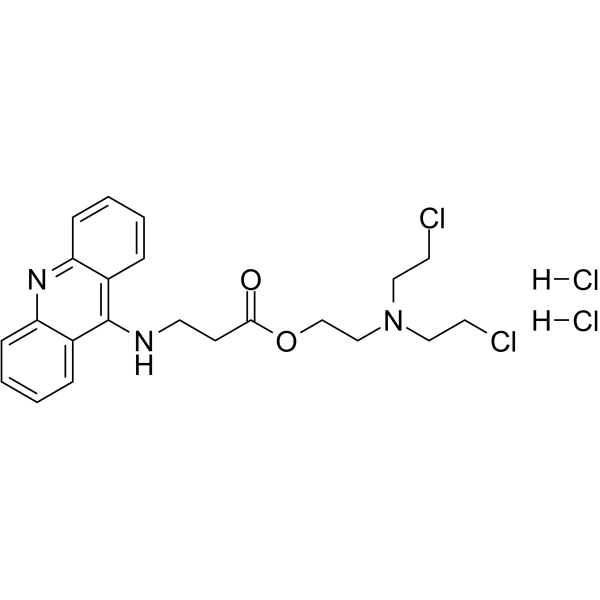
- HY-P2185
-
|
|
MMP
|
Others
|
|
NFF-3, the peptide, is a selective MMP substrate. NFF-3 selectively binds to MMP-3 and MMP-10 to be hydrolyzed. NFF-3 is also cleaved by trypsin, hepatocyte growth factor activator, and factor Xa. Label NFF-3 with a CyDye pair, Cy3/Cy5Q, can produce fluorescence in cell assays to detect cell activity .
|
-
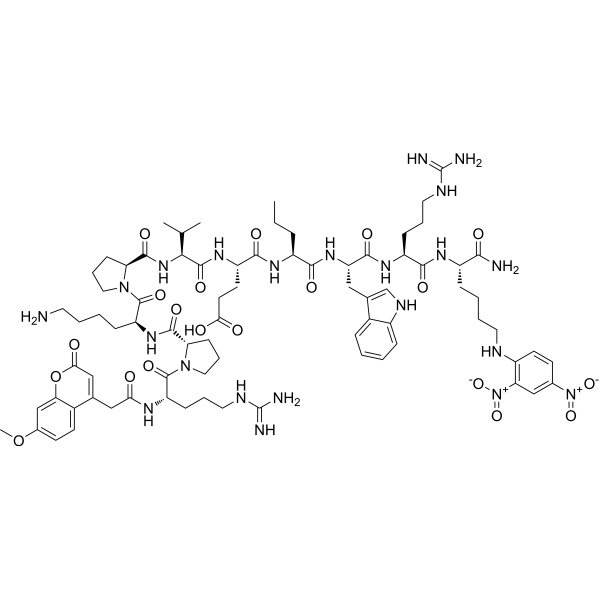
- HY-P2185A
-
|
|
MMP
|
Others
|
|
NFF-3 TFA, the peptide, is a selective MMP substrate. NFF-3 TFA selectively binds to MMP-3 and MMP-10 to be hydrolyzed. NFF-3 TFA is also cleaved by trypsin, hepatocyte growth factor activator, and factor Xa. Label NFF-3 TFA with a CyDye pair, Cy3/Cy5Q, can produce fluorescence in cell assays to detect cell activity .
|
-
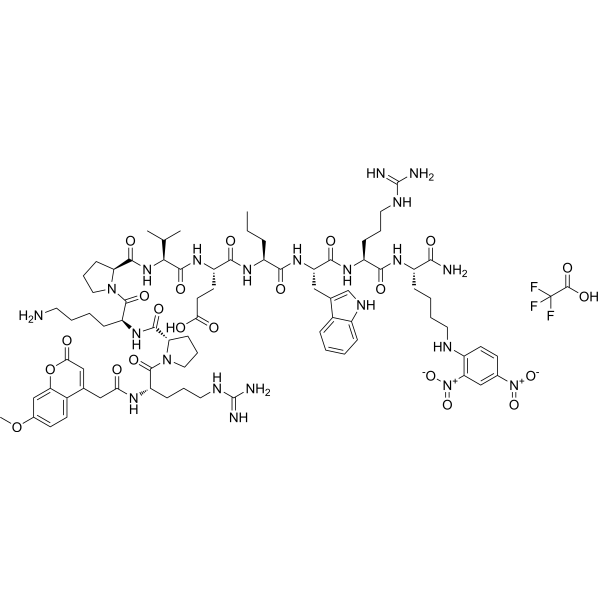
- HY-129047A
-
|
|
Ser/Thr Protease
Protease Activated Receptor (PAR)
|
Infection
Inflammation/Immunology
|
|
Trypsin MS grade is a serine protease enzyme, and hydrolyzes proteins at the carboxyl side of the Lysine or Arginine. Trypsin MS grade activates PAR2 and PAR4. Trypsin MS grade induces cell-to-cell membrane fusion in PDCoV infection by the interaction of S glycoprotein of PDCoV and pAPN. Trypsin MS grade also promotes cell proliferation and differentiation. Trypsin MS grade can be used in the research of wound healing and neurogenic inflammation .
|
-

- HY-P2302
-
|
|
Antibiotic
Bacterial
Fungal
|
Infection
|
|
Defensin HNP-3 human is a cytotoxic antibiotic peptide known as "defensin". Defensin HNP-3 human has inhibitory activity against Staphylococcus aureus, Pseudomonas aeruginosa and Escherichia coli. Defensin HNP-3 human is initially synthesized as the 94 amino acids preproHNP(1-94), which is hydrolyzed to proHNP(20-94) and converted to mature HNP(65-94) after the removal of anion precursors .
|
-
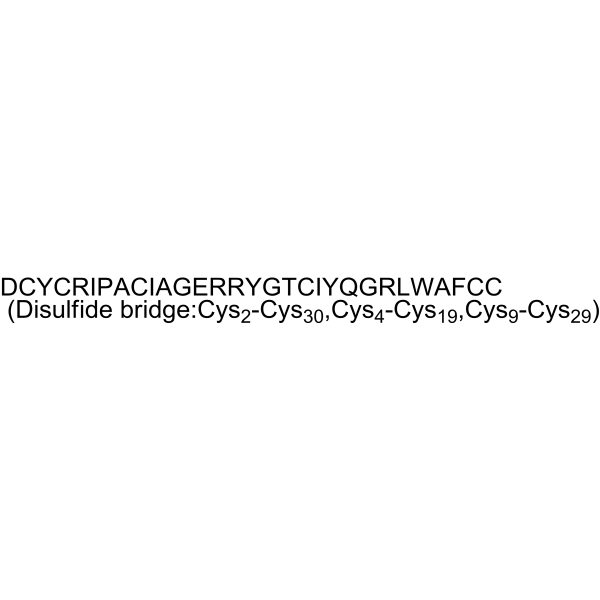
- HY-N6660
-
|
Tricaprin; Glyceryl tridecanoate
|
Endogenous Metabolite
Androgen Receptor
|
Metabolic Disease
|
|
Trisdecanoin (Tricaprin; Glyceryl tridecanoate) is an orally available precursor of decanoic acid (DA precursor) that can be hydrolyzed to decanoic acid. Trisdecanoin and its metabolite capric acid not only provide the body with a quick source of energy, but can also affect lipid metabolism. Trisdecanoin is a major component of medium chain triglycerides (MCT), which has preventive or inhibitory properties for abdominal aortic aneurysms (AAA), inhibition of cardiovascular disease, and anti-androgen (NSAA) and anti-hyperglycemic properties. Trisdecanoin can be used as an additive in food, medicine and cosmetics .
|
-
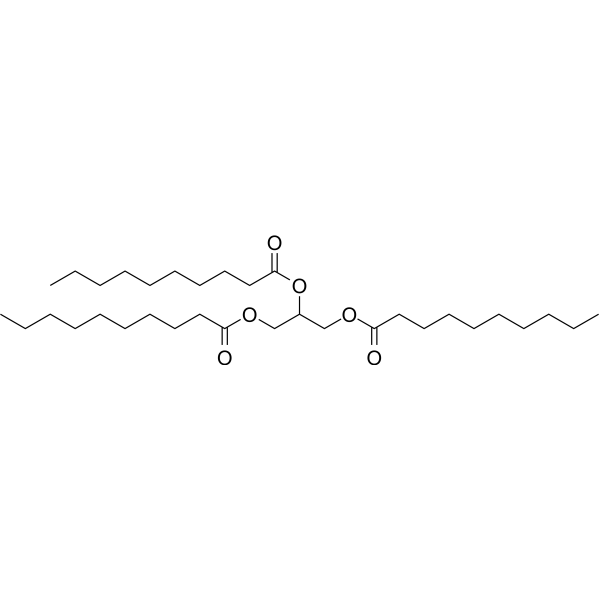
- HY-145384
-
|
|
Phospholipase
|
Inflammation/Immunology
|
|
ROC-0929 (compound 13a) is a potent and selective inhibitor of secreted phospholipases A2 (sPLA2s) with an IC50 of 80 nM, specially targeting hGX. ROC-0929 inhibits the phosphorylation of ERK1/2 and p-38. Secreted phospholipases A2 (sPLA2s) are a family of disulfide-rich, Ca 2+-dependent enzymes that hydrolyze the sn-2 position of glycero-phospholipids to release a fatty acid and a lysophospholipid. ROC-0929 has the potential for researching inflammation related diseases .
|
-
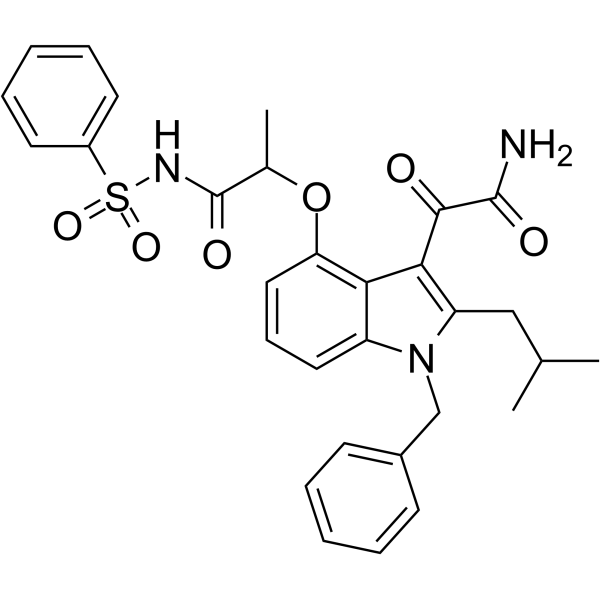
- HY-126220
-
|
|
Fluorescent Dye
|
Others
|
|
KMG-301AM is the acetoxy methyl esterified form of KMG-301. KMG-301AM successfully accumulates in mitochondria and then it is hydrolyzed to KMG-301. KMG-301 is an Mg 2+-selective fluorescent probe functional in mitochondria in intact cells. Since the mitochondrial membrane is impermeable to KMG-301, it is not released upon depolarization of the mitochondrial membrane potential. KMG-301 can indicate changes in mitochondrial Mg2+ concentration and shows Mg 2+ transport across the mitochondrial membrane in the early phases of a cellular model .
|
-
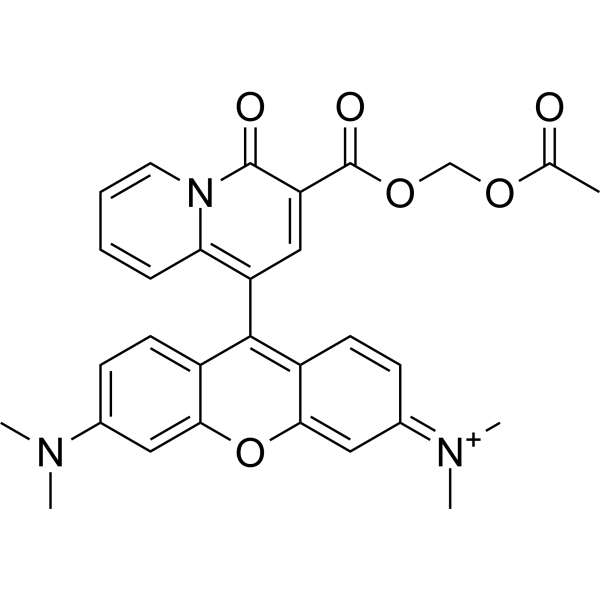
- HY-126220A
-
|
|
Fluorescent Dye
|
Others
|
|
KMG-301AM TFA is the acetoxy methyl esterified form of KMG-301. KMG-301AM TFA successfully accumulates in mitochondria and then it is hydrolyzed to KMG-301. KMG-301 is an Mg 2+-selective fluorescent probe functional in mitochondria in intact cells. Since the mitochondrial membrane is impermeable to KMG-301, it is not released upon depolarization of the mitochondrial membrane potential. KMG-301 can indicate changes in mitochondrial Mg2+ concentration and shows Mg 2+ transport across the mitochondrial membrane in the early phases of a cellular model .
|
-
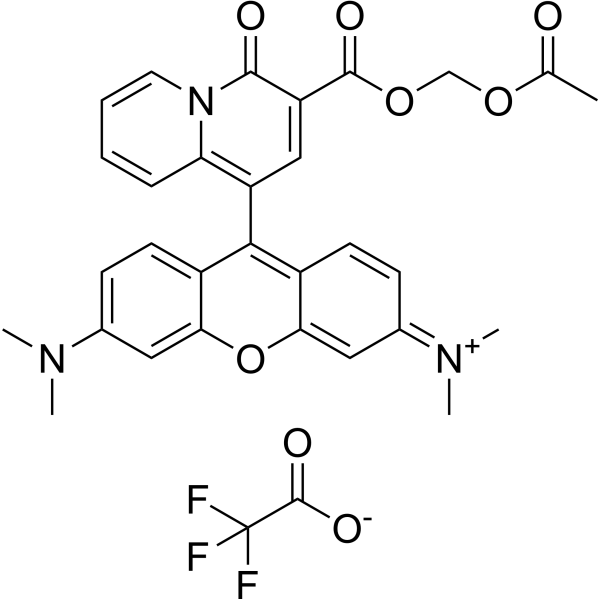
| Cat. No. |
Product Name |
Type |
-
- HY-113862
-
|
|
Dyes
|
|
PHOME is a fluorogenic substrate for sEH. sEH can hydrolyze the epoxy ring in the PHOME substrate. PHOME can be used for fluorescent epoxide hydrolase assay (extracted from patent CN113402447A) .
|
-
- HY-D1758
-
|
|
Fluorescent Dyes/Probes
|
|
Fura-5F AM is a membrane-permeant fluorescent calcium indicator. Upon entering the cell, this probe is hydrolyzed by cytosilic esterases and trapped as the active chelator.
|
-
- HY-D1759
-
|
|
Fluorescent Dyes/Probes
|
|
Fura-4F AM is a cell-permeant fluorescent calcium indicator. Upon entering the cell, this probe is hydrolyzed by cytosilic esterases and trapped as the active chelator.
|
-
- HY-121941
-
|
|
Fluorescent Dyes/Probes
|
|
Epoxy Fluor 7 is a sensitive fluorescent substrate for soluble epoxide hydrolase (sEH) that can be used for human and mouse enzymes. Epoxy Fluor 7 is hydrolyzed to yield fluorescence used for monitoring the activity of sEH.
|
-
- HY-D1769
-
|
|
Fluorescent Dyes/Probes
|
|
N-hydroxy Rhodamine B amide is a ClO - indicator, which is hydrolyzed to prduce fluorescence in the presence of ClO -. The fluorescence intensity of N-hydroxy Rhodamine B amide is proportional to the product, thus can be used to quantify ClO -.
|
-
- HY-D1670
-
-
- HY-D0047
-
5-CFDA
2 Publications Verification
5-Carboxyfluorescein diacetate
|
Fluorescent Dyes/Probes
|
|
5-CFDA is a common aliphatic luciferin-line organism. CFDA conducts free diffusion into cells, and then it is hydrolyzed into carboxyl fluorescein (CF) by intracellular non-specific lipase. CF containing portion contains an additional negative charge so that it is better retained in cells, compared to fluorescein dyes .
|
-
- HY-D0721
-
|
6-Carboxyfluorescein diacetate
|
Fluorescent Dyes/Probes
|
|
6-CFDA is a common aliphatic luciferin-line organism. CFDA conducts free diffusion into cells, and then it is hydrolyzed into carboxyl fluorescein (CF) by intracellular non-specific lipase. CF containing portion contains an additional negative charge so that it is better retained in cells, compared to fluorescein dyes .
|
-
- HY-D0722
-
|
5-(6)-Carboxyfluorescein diacetate; CFDA
|
Fluorescent Dyes/Probes
|
|
5(6)-CFDA is a common aliphatic luciferin-line organism. CFDA conducts free diffusion into cells, and then it is hydrolyzed into carboxyl fluorescein (CF) by intracellular non-specific lipase. CF containing portion contains an additional negative charge so that it is better retained in cells, compared to fluorescein dyes .
|
-
- HY-D1688
-
|
|
Fluorescent Dyes/Probes
|
|
Flubida-2 is a cell permeable dye which can be hydrolyzed to Fubi-2 by endoesterases in cells (after hydrolysis, Ex=492 nm, Em=517 nm). Flubida-2 can be used to detect pH at a specific site in a cell organelle by directing the probe to where avidin fusion proteins are located .
|
-
- HY-130575
-
|
|
Fluorescent Dyes/Probes
|
|
Fura-FF AM is a cell-permeable acetoxymethyl ester of fura-FF, a dluorescent calcium indicator. Fura-FF AM is hydrolyzed by intracellular esterases to release fura-FF in cells. Fura-FF is a difluorinated derivative of the calcium indicator fura-2. Compared to fura-2, fura-FF has a low affinity for calcium and is suitable for studying compartments with high concentrations of calcium.
|
-
- HY-D0041
-
Calcein-AM
Maximum Cited Publications
37 Publications Verification
Calcein acetoxymethyl ester
|
Fluorescent Dyes/Probes
|
|
Calcein AM, has cell membrane permeability and can easily enter the cell. Calcein AM has no fluorescence and is hydrolyzed by endogenous esterase in the cell to produce polar molecule Calcein (Calcein), which has strong negative charge and cannot permeate the cell membrane. Calcein can emit strong green fluorescence, so it is often used with Propidium Iodide for cell viability/virulence detection, excitation/emission wavelength: 494/515 nm .
|
-
- HY-P2185
-
|
|
Dyes
|
|
NFF-3, the peptide, is a selective MMP substrate. NFF-3 selectively binds to MMP-3 and MMP-10 to be hydrolyzed. NFF-3 is also cleaved by trypsin, hepatocyte growth factor activator, and factor Xa. Label NFF-3 with a CyDye pair, Cy3/Cy5Q, can produce fluorescence in cell assays to detect cell activity .
|
| Cat. No. |
Product Name |
Type |
-
- HY-P2802
-
|
α-D-Glucosidase
|
Biochemical Assay Reagents
|
|
α-Glucosidase (α-D-Glucosidase), a carbohydrate hydrolyzing enzyme, catalyzes the liberation of α-glucose from the non-reducing end of the substrate. α-Glucosidase can facilitate the absorption of glucose by the small intestine. Inhibition of α-Glucosidase is an effective management of non-insulin-dependent diabetes mellitus (NIDDM) .
|
-
- HY-Y0850L
-
|
PVA (Mw 85000-124000, 99+% hydrolyzed); Poly(Ethenol) (Mw 85000-124000, 99+% hydrolyzed)
|
Drug Delivery
|
|
Polyvinyl alcohol (Mw 85000-124000, 99+% hydrolyzed) is a polyvinyl alcohol with a molecular weight of 85000-124000 and hydrolytic properties. The degree of hydrolysis refers to the degree to which the acetate groups in the original polyvinyl acetate are converted into hydroxyl groups during the hydrolysis process. Polyvinyl alcohol (Mw 85000-124000, 99+% hydrolyzed) is the hydrolysis and removal of acetate groups after the polymerization of ethylene acetate. And polyvinyl alcohol is obtained. Polyvinyl alcohol with different degrees of hydrolysis can be used to self-crosslink to form cryogel, which can be used as biological excipients .
|
-
- HY-Y0850T
-
|
PVA (Mw 146000-186000, 99+% hydrolyzed); Poly(Ethenol) (Mw 146000-186000, 99+% hydrolyzed)
|
Drug Delivery
|
|
Polyvinyl alcohol (Mw 146000-186000, 99+% hydrolyzed) is a polyvinyl alcohol with a molecular weight of 146000-186000 and hydrolytic properties. The degree of hydrolysis refers to the degree to which the acetate groups in the original polyvinyl acetate are converted into hydroxyl groups during the hydrolysis process. Polyvinyl alcohol (Mw 146000-186000, 99+% hydrolyzed) is the hydrolysis and removal of acetate groups after the polymerization of ethylene acetate. And polyvinyl alcohol is obtained. Polyvinyl alcohol with different degrees of hydrolysis can be used to self-crosslink to form cryogel, which can be used as biological excipients .
|
-
- HY-Y0850P
-
|
PVA (Mw 146000-186000, 87-89% hydrolyzed); Poly(Ethenol) (Mw 146000-186000, 87-89% hydrolyzed)
|
Drug Delivery
|
|
Polyvinyl alcohol (Mw 146000-186000, 87-89% hydrolyzed) is a polyvinyl alcohol with a molecular weight of 146000-186000 and hydrolytic properties. The degree of hydrolysis refers to the degree to which the acetate groups in the original polyvinyl acetate are converted into hydroxyl groups during the hydrolysis process. Polyvinyl alcohol (Mw 146000-186000, 87-89% hydrolyzed) is the hydrolysis and removal of acetate groups after the polymerization of ethylene acetate. And polyvinyl alcohol is obtained. A degree of hydrolysis of 87-89% indicates that a large part of the acetate groups have been removed, resulting in a large number of hydroxyl groups in the PVA structure. Polyvinyl alcohol with different degrees of hydrolysis can be used to self-crosslink to form cryogel, which can be used as biological excipient .
|
-
- HY-Y0850J
-
|
PVA (Mw 13000-23000, 87-89% hydrolyzed); Poly(Ethenol) (Mw 13000-23000, 87-89% hydrolyzed)
|
Drug Delivery
|
|
Polyvinyl alcohol (Mw 13000-23000, 87-89% hydrolyzed) is a polyvinyl alcohol with a molecular weight of 130000-23000 and hydrolytic properties. The degree of hydrolysis refers to the degree to which the acetate groups in the original polyvinyl acetate are converted into hydroxyl groups during the hydrolysis process. Polyvinyl alcohol (Mw 13000-23000, 87-89% hydrolyzed) is the hydrolysis and removal of acetate groups after the polymerization of ethylene acetate. And polyvinyl alcohol is obtained. A degree of hydrolysis of 87-89% indicates that a large part of the acetate groups have been removed, resulting in a large number of hydroxyl groups in the PVA structure. Polyvinyl alcohol with different degrees of hydrolysis can be used to self-crosslink to form cryogel, which can be used as biological excipient .
|
-
- HY-Y0850I
-
|
PVA (Mw 9000-10000, 80% hydrolyzed); Poly(Ethenol) (Mw 9000-10000, 80% hydrolyzed)
|
Drug Delivery
|
|
Polyvinyl alcohol (Mw 9000-10000, 80% hydrolyzed) also known as PVA, is a vinyl water-soluble polymer that can be used as a non-ionic surfactant. Polyvinyl alcohol (Mw 9000-10000, 80% hydrolyzed) can also be used as a biodegradable polymer and can be used in adhesives, coatings, textiles, ceramics, and cosmetics .
|
-
- HY-150278
-
|
|
Biochemical Assay Reagents
|
|
Peptone from casein is derived from casein hydrolysis, casein is hydrolyzed by pancreatic enzymes and refined into peptone.
|
-
- HY-P2856
-
|
|
Biochemical Assay Reagents
|
|
Phosphatidylinositol phosphodiesterase hydrolyzes phosphatidylinositol to diacylglycerols and a mixture of myoinositol 1- and 1, 2-cyclic phosphates .
|
-
- HY-W004761
-
|
Hypodiboric acid
|
Biochemical Assay Reagents
|
|
Tetrahydroxydiboron can be used to optimize the Miyaura borylation process, replacing bis(pinacolato) diboron by hydrolyzing the resulting boronic ester to its corresponding acid .
|
-
- HY-Y0850O
-
|
PVA (Mw 31000-50000, 87-89% hydrolyzed); Poly(Ethenol) (Mw 31000-50000, 87-89% hydrolyzed)
|
Drug Delivery
|
|
Polyvinyl alcohol (Mw 31000-50000, 87-89% hydrolyzed) is a synthetic polymer derived from polyvinyl acetate through partial or complete hydroxylation .
|
-
- HY-P2877
-
|
|
Biochemical Assay Reagents
|
|
Tannase, also known as tanninyl hydrolase, is an enzyme that can hydrolyze ester bonds and tannic acid side bonds, releasing glucose and gallic acid, and is outstanding in clarifying wine and fruit juice .
|
-
- HY-134163
-
|
4-Methylumbelliferyl alpha-L-arabinopyranoside
|
Carbohydrates
|
|
4-Methylumbelliferyl α-L-arabinopyranoside (4-Methylumbelliferyl alpha-L-arabinopyranoside) is a substrate for enzymes that hydrolyze arabinose-containing substrates, such as α-L-arabinopyranoside .
|
-
- HY-E70012
-
|
|
Biochemical Assay Reagents
|
|
Penicillinase is a beta-lactamase. beta-lactamase enzymes inactivate beta-lactam antibiotics by hydrolyzing the peptide bond of the characteristic four-membered beta-lactam ring rendering the antibiotic ineffective .
|
-
- HY-E70073
-
|
Sialidase isoenzyme M2; AuSialidase M2
|
Biochemical Assay Reagents
|
|
Ganglioside sialidase (AuSialidase M2) from Arthrobacter ureafaciens. Ganglioside sialidase is a highly specific N-acetylneuraminidase. Ganglioside sialidase can hydrolyze the internal sialic acid of GM1 under optimal condition with sodium cholate .
|
-
- HY-P2999
-
|
ENGase
|
Biochemical Assay Reagents
|
|
Endo-β-N-acetylglucosaminidase (ENGase) is cytosolic deglycosylating enzyme that hydrolyzes the N-linked oligosaccharides. Endo-β-N-acetylglucosaminidase can be used for glycan analysis on glycoproteins and preparation of precursors for glycosylated compounds, is often used in biochemical studies .
|
-
- HY-Y0850H
-
|
PVA (Mw 89000-98000, 99+% hydrolyzed); Poly(Ethenol) (Mw 89000-98000, 99+% hydrolyzed)
|
Drug Delivery
|
|
Polyvinyl alcohol (Mw 89000-98000, 99+% hydrolyzed) also known as PVA, is a vinyl water-soluble polymer that can be used as a non-ionic surfactant. It can also be used as a biodegradable polymer and can be used in adhesives, coatings, textiles, ceramics and cosmetics .
|
-
- HY-Y0850N
-
|
PVA (Mw 13000-23000, 98% hydrolyzed); Poly(Ethenol) (Mw 13000-23000, 98% hydrolyzed)
|
Drug Delivery
|
|
Polyvinyl alcohol (Mw 13000-23000, 98% hydrolyzed), also known as PVA, is a vinyl water-soluble polymer that can be used as a non-ionic surfactant. It can also be used as a biodegradable polymer and can be used in adhesives, coatings, textiles, ceramics and cosmetics .
|
-
- HY-E70185
-
|
EC:3.2.1.24; MAN2B1; LAMAN
|
Enzyme Substrates
|
|
Lysosomal α-mannosidase (EC:3.2.1.24; MAN2B1; LAMAN) is an exoglycosidase that hydrolyzes α-mannosidic linkages of mannoglycans. Lysosomal α-mannosidase can be used in the study of α-mannosidosis .
|
-
- HY-Y0850K
-
|
PVA (Mw 31000-50000, 98-99% hydrolyzed); Poly(Ethenol) (Mw 31000-50000, 98-99% hydrolyzed)
|
Drug Delivery
|
|
Polyvinyl alcohol (Mw 31000-50000, 98-99% hydrolyzed), also known as PVA, is a vinyl water-soluble polymer that can be used as a non-ionic surfactant. It can also be used as a biodegradable polymer and can be used in adhesives, coatings, textiles, ceramics and cosmetics .
|
-
- HY-Y0850E
-
|
PVA (Mw 30000-70000, 87-90% hydrolyzed); Poly(Ethenol) (Mw 30000-70000, 87-90% hydrolyzed)
|
Drug Delivery
|
|
Polyvinyl alcohol (Mw 30000-70000, 87-90% hydrolyzed) is a polyvinyl alcohol with a molecular weight of 30000-70000 and hydrolytic properties. The degree of hydrolysis refers to the degree to which the acetate groups in the original polyvinyl acetate are converted into hydroxyl groups during the hydrolysis process. Polyvinyl alcohol (Mw 30000-70000, 87-90% hydrolyzed) is the hydrolysis and removal of acetate groups after the polymerization of ethylene acetate. And polyvinyl alcohol is obtained. A degree of hydrolysis of 87-90% indicates that a large part of the acetate groups have been removed, resulting in a large number of hydroxyl groups in the PVA structure. Polyvinyl alcohol with different degrees of hydrolysis can be used to self-crosslink to form cryogel, which can be used as biological excipients .
|
-
- HY-Y0850M
-
|
PVA (Mw 85000-124000, 87-89% hydrolyzed); Poly(Ethenol) (Mw 85000-124000, 87-89% hydrolyzed)
|
Drug Delivery
|
|
Polyvinyl alcohol (Mw 85000-124000, 87-89% hydrolyzed) is a polyvinyl alcohol with a molecular weight of 85000-124000 and hydrolytic properties. The degree of hydrolysis refers to the degree to which the acetate groups in the original polyvinyl acetate are converted into hydroxyl groups during the hydrolysis process. Polyvinyl alcohol (Mw? 85000-124000, 87-89% hydrolyzed) is the hydrolysis and removal of acetate groups after the polymerization of ethylene acetate. And polyvinyl alcohol is obtained. A degree of hydrolysis of 87-89% indicates that a large part of the acetate groups have been removed, resulting in a large number of hydroxyl groups in the PVA structure. Polyvinyl alcohol with different degrees of hydrolysis can be used to self-crosslink to form cryogel, which can be used as biological excipient .
|
-
- HY-N11598
-
|
|
Biochemical Assay Reagents
|
|
α-GLU stands for α-glucosidase. α-GLU hydrolyzes starch and disaccharides via targeting to terminal, non-reducing (1→4)-linked α-D-glucose residues to produce α-glucose. α-GLU is substrate selective .
|
-
- HY-153126
-
|
|
Biochemical Assay Reagents
|
|
Yeast extract is a concentrate of the soluble part of yeast, especially Saccharomyces cerevisiae. The main nutritional components of yeast extract include partly hydrolyzed protein with 35-40% of free amino acid, and it also contain B vitamins and some trace elements. Yeast extract can be used as nutrients for bacterial culture media .
|
-
- HY-P2963
-
|
|
Biochemical Assay Reagents
|
|
Nuclease P1 is a single-stranded specific endonuclease, it hydrolyzes nucleic acids into 5'-mononucleotides and cleaves the single-stranded region of a double-stranded nucleic acid. Nuclease P1 is one of the most well-known single stranded specific nucleases in the field of molecular biology, it is widely used in the pharmaceutical and food industries .
|
-
- HY-134429
-
|
|
Biochemical Assay Reagents
|
|
p-Nitrophenyl α-L-arabinopyranoside is a biochemical reagent. p-Nitrophenyl α-L-arabinopyranoside can be hydrolyzed by recombinant BgaA (rBgaA, isolated from E. coli BL21 (DE3) strain harboring pEBGA29). p-Nitrophenyl α-L-arabinopyranoside has potential application in enzyme activity detection .
|
-
- HY-130777A
-
|
Adenylyl imidodiphosphate lithium hydrate
|
Biochemical Assay Reagents
|
|
AMP-PNP lithium hydrate is a non-hydrolyzable analog of ATP. AMP-PNP can replace ATP for biological research and is not hydrolyzed by intracellular enzymes. In the study of BtuCD-F, a vitamin B12 transporter, it was found that AMP-PNP can block the channel formed by the two BtuCDs of the BtuCD-F complex, thereby preventing the entry of vitamin B12 .
|
-
- HY-P2753
-
|
SP
|
Biochemical Assay Reagents
|
|
Sucrose phosphorylase is a bacterial transglucosidase that catalyzes the conversion of sucrose and phosphate into α-D-glucose-1-phosphate and D-fructose. The glucosylated Sucrose phosphorylase can also be hydrolyzed into α-D-glucose, or transfer the glucoyl to the hydroxyl group of the receptor, and then decomposed into new α-D-glucoside products. The enzymatic activity of base phosphorylase to substrate and product is weak .
|
-
- HY-P3004
-
|
Lyticase
|
Biochemical Assay Reagents
|
|
Endo-1,3-β-glucanase specifically hydrolyzes β-1,3-glycosidic bonds randomly along the β-glucan chain, and the final product is mainly glucan oligosaccharide. Endo-1,3-β-glucanase is produced by a variety of fungi, is often used in biochemical studies .
|
-
- HY-E70077
-
|
|
Biochemical Assay Reagents
|
|
Penicillinase (from calf stomach) is an enzyme that degrades penicillin by hydrolyzing the cyclic amide bonds in the lactam ring of penicillin, which can inactivate penicillin. Penicillinase (from calf stomach) can be isolated from penicillin resistant strains. Penicillinase (from calf stomach) has potential application as a marker for steroid hormone enzyme linked immunosorbent assay .
|
-
- HY-130767
-
|
|
Biochemical Assay Reagents
|
|
Naphthol AS-TR Phosphate is a water-soluble dye commonly used as an enzyme substrate in various biochemical assays to detect alkaline phosphatase activity. Naphthol AS-TR Phosphate has unique chemical properties that allow it to be hydrolyzed by alkaline phosphatase to form a colored product that can be detected spectrophotometrically. This makes it a useful tool for monitoring enzyme activity in biological samples such as serum or urine.
|
-
- HY-E70068
-
|
|
Biochemical Assay Reagents
|
|
Endo-β-N-acetylglucosaminidase (Endo S) is a family 18 glycosyl hydrolase secreted by Streptococcus pyogenes. Endo-β-N-acetylglucosaminidase (Endo S) exclusively hydrolyzes the β-1,4-di-N-acetylchitobiose core of the asparagine-linked complex-type glycan on Asn-297 of the γ-chains of IgG antibody .
|
-
- HY-129047
-
Trypsin
4 Publications Verification
|
Biochemical Assay Reagents
|
|
Trypsin is a serine protease enzyme, and hydrolyzes proteins at the carboxyl side of the Lysine or Arginine. Trypsin activates PAR2 and PAR4. Trypsin induces cell-to-cell membrane fusion in PDCoV infection by the interaction of S glycoprotein of PDCoV and pAPN. Trypsin also promotes cell proliferation and differentiation. Trypsin can be used in the research of wound healing and neurogenic inflammation .
|
| Cat. No. |
Product Name |
Target |
Research Area |
-
- HY-P4349A
-
|
|
Peptides
|
Others
|
|
Pyr-Arg-Thr-Lys-Arg-AMC TFA is a AMC peptide. AMC is a decapeptide that is specifically hydrolyzed by proteases such as trypsin and thrombin. The AMC peptide can be used to determine the activity of protease and the potency of enzyme inhibitors .
|
-
- HY-137337
-
|
|
Fluorescent Dye
|
Others
|
|
Suc-Ala-Ala-Phe-AMC is a fluorogenic chymotrypsin substrate, can be hydrolyzed by endopeptidase. Suc-Ala-Ala-Phe-AMC has been used in both in vivo assays of the acrosome reaction and in vitro enzyme assays .
|
-
- HY-P2856
-
|
|
Endogenous Metabolite
|
Metabolic Disease
|
|
Phosphatidylinositol phosphodiesterase hydrolyzes phosphatidylinositol to diacylglycerols and a mixture of myoinositol 1- and 1, 2-cyclic phosphates .
|
-
- HY-P4527
-
|
|
Peptides
|
Others
|
|
Ala-Ala-βNA is a dipeptidyl-fl-naphthylamide (βNA). Ala-Ala-βNA is readily hydrolyzed, with optimum hydrolysis pH of 8.5-9.0 .
|
-
- HY-P4349
-
|
|
Peptides
|
Others
|
|
Pyr-Arg-Thr-Lys-Arg-AMC is a AMC peptide. AMC is a decapeptide that is specifically hydrolyzed by proteases such as trypsin and thrombin. The AMC peptide can be used to determine the activity of protease and the potency of enzyme inhibitors .
|
-
- HY-P2999
-
|
ENGase
|
Endogenous Metabolite
|
Others
|
|
Endo-β-N-acetylglucosaminidase (ENGase) is cytosolic deglycosylating enzyme that hydrolyzes the N-linked oligosaccharides. Endo-β-N-acetylglucosaminidase can be used for glycan analysis on glycoproteins and preparation of precursors for glycosylated compounds, is often used in biochemical studies .
|
-
- HY-P4443
-
|
|
Peptides
|
Others
|
|
Ac-GAK-AMC is a fluorescent substrate that can be used to measure protease activity. AMC (7-amino-4-methylcoumarin) is a fluorescent group. In the presence of protease, the protease will hydrolyze Ac-GAK-AMC into a fluorescent product .
|
-
- HY-P2176
-
|
Z-Leu-Arg-Gly-Gly-AMC
|
Biochemical Assay Reagents
|
Others
|
|
Z-LRGG-AMC (Z-Leu-Arg-Gly-Gly-AMC) is a fluorescent substrate that hydrolyzes and releases free fluorescent 7-amino-4-methylcoumarin (AMC). Detection wavelength of AMC: Ex/Em=360/460 nm .
|
-
- HY-P4556
-
|
|
Biochemical Assay Reagents
|
Others
|
|
H-Phe-Gly-His-p-nitro-Phe-Phe-Ala-Phe-OMe is a polypeptide that can be hydrolyzed by Rennin (HY-P2810). H-Phe-Gly-His-p-nitro-Phe-Phe-Ala-Phe-OMe is commonly used as a biochemical reaction reagent .
|
-
- HY-P4406
-
|
|
Peptides
|
Others
|
|
Abz-AGLA-Nba is a fluorogenic substrate for the determination of protease activity. Abz-AGLA-Nba is hydrolyzed to release aminoacyl benzimide (Abz-AGLA) and 2-naphthylaminoacyl (Nba). The product Abz-AGLA produced by this hydrolysis reaction is fluorescent under ultraviolet light and can emit a fluorescent signal .
|
-
- HY-P4550
-
|
|
Endogenous Metabolite
|
Metabolic Disease
|
|
H-Hyp-Gly-OH is a dipeptide containing hydroxyproline and glycine. H-Hyp-Gly-OH promotes the growth of mouse primary fibroblasts on collagen gel. H-Hyp-Gly-OH has potential applications in improving skin by ingesting hydrolyzed collagen. H-Hyp-Gly-OH can be used for metabolic research .
|
-
- HY-P4580
-
|
|
Proteasome
|
Others
|
|
Suc-Ala-Ala-Pro-Phe-SBzl can be used as the substrate of rat intestinal mast cell protease (RMCP I), rat skeletal muscle mast cell protease (RMCP II) and Chymotrypsin (HY-108910). Suc-Ala-Ala-Pro-Phe-SBzl can be hydrolyzed by glycine (R208G) .
|
-
- HY-P4727
-
|
DSIP-isoD
|
Peptides
|
Others
|
|
(β-Asp5)-Delta-Sleep Inducing Peptide (DSIP-isoD) is a synthetic polypeptide that can be partially hydrolyzed by NaOH or SDS. (β-Asp5)-Delta-Sleep Inducing Peptide can be used to study the catalytic activity of mitochondrial protein L-isoaspartyl (D-aspartyl) methyltransferase (PIMT) .
|
-
- HY-P4404
-
|
|
Peptides
|
Others
|
|
Abz-GIVRAK(Dnp) is the most efficient substrate for cathepsin B and is highly selective for this enzyme among lysosomal cysteine proteases. After Abz-GIVRAK(Dnp) is hydrolyzed, aminoacylbenziminosulfosuccinic acid (Abz-SAS) is released, and dinitrobenzoyl (Dnp) is also released. The product of this hydrolysis reaction, Abz-SAS, is fluorescent under ultraviolet light and can emit a fluorescent signal .
|
-
- HY-P3004
-
|
Lyticase
|
Endogenous Metabolite
|
Others
|
|
Endo-1,3-β-glucanase specifically hydrolyzes β-1,3-glycosidic bonds randomly along the β-glucan chain, and the final product is mainly glucan oligosaccharide. Endo-1,3-β-glucanase is produced by a variety of fungi, is often used in biochemical studies .
|
-
- HY-P10007
-
|
Z-GPFL-CHO
|
Proteasome
|
Cancer
|
|
Z-Gly-Pro-Phe-Leu-CHO (Z-GPFL-CHO) is a tetrapeptide aldehyde that acts as a highly selective and potent proteasomal inhibitor (Ki = 1.5 µM for branched chain amino acid preferring, 2.3 µM for small neutral amino acid preferring, and 40.5 µM for chymotrypsin-like activities; IC50 = 3.1 µM for peptidyl-glutamyl peptide hydrolyzing activity) .
|
-
- HY-P2185
-
|
|
MMP
|
Others
|
|
NFF-3, the peptide, is a selective MMP substrate. NFF-3 selectively binds to MMP-3 and MMP-10 to be hydrolyzed. NFF-3 is also cleaved by trypsin, hepatocyte growth factor activator, and factor Xa. Label NFF-3 with a CyDye pair, Cy3/Cy5Q, can produce fluorescence in cell assays to detect cell activity .
|
-
- HY-P2185A
-
|
|
MMP
|
Others
|
|
NFF-3 TFA, the peptide, is a selective MMP substrate. NFF-3 TFA selectively binds to MMP-3 and MMP-10 to be hydrolyzed. NFF-3 TFA is also cleaved by trypsin, hepatocyte growth factor activator, and factor Xa. Label NFF-3 TFA with a CyDye pair, Cy3/Cy5Q, can produce fluorescence in cell assays to detect cell activity .
|
-
- HY-P2302
-
|
|
Antibiotic
Bacterial
Fungal
|
Infection
|
|
Defensin HNP-3 human is a cytotoxic antibiotic peptide known as "defensin". Defensin HNP-3 human has inhibitory activity against Staphylococcus aureus, Pseudomonas aeruginosa and Escherichia coli. Defensin HNP-3 human is initially synthesized as the 94 amino acids preproHNP(1-94), which is hydrolyzed to proHNP(20-94) and converted to mature HNP(65-94) after the removal of anion precursors .
|
-
- HY-KE7058
-
|
|
|
RNase H is an endoribonuclease expressed and purified from Escherichia coli and can specifically hydrolyze RNA in DNA-RNA hybrid strands.
|
-
- HY-K3007
-
|
|
|
MCE 0.25% Trypsin-EDTA (1x), phenol red consists of dried trypsin powder dissolved in EDTA. MCE Trypsin hydrolyzes intercellular proteins and disperses primary tissues or adherent cells into individual cells, and can be widely used for cell dissociation, cell culture passaging and primary tissue dissociation.
|
| Cat. No. |
Product Name |
Category |
Target |
Chemical Structure |
| Cat. No. |
Product Name |
Chemical Structure |
-
- HY-B0815S
-
|
|
|
Chlorpyrifos-d10 is the deuterium labeled Chlorpyrifos. Chlorpyrifos is an organophosphate insecticide that is classified as a phosphorothionate. The oxon metabolite of Chlorpyrifos is an inhibitor of acetylcholinesterase (AChE), affecting neurological function in insects, humans, and other animals. The Chlorpyrifos oxon (CPO) metabolite is hydrolyzed by the plasma enzyme paraoxonase 1 (PON1), and susceptibility to neurotoxicity associated with CPO exposure is mitigated by PON1 overexpression.
|
-

-
- HY-101541S
-
|
|
|
Docosahexaenoic acid-d5 methyl ester is the deuterium labeled Docosahexaenoic Acid methyl ester. Docosahexaenoic Acid methyl ester is a methylated docosahexaenoic acid analog which can be intercalated into membrane phospholipids without being oxidized or hydrolyzed[1][2].
|
-

-
- HY-B1323S
-
|
|
|
Dipivefrin-d6 (hydrochloride) is deuterium labeled Dipivefrin (hydrochloride). Dipivefrin hydrochloride (Dipivefrine hydrochloride) is an antiglaucoma proagent that is hydrolyzed to the active compound, epinephrine, by esterases in the cornea[1][2].
|
-

-
- HY-B1278S1
-
|
|
|
α-Tocopherol-d6 (acetate) is the deuterium labeled D-α-Tocopherol acetate. D-α-Tocopherol acetate (D-Vitamin E acetate) can be hydrolyzed to d-alpha-tocopherol (VE) and absorbed in the small intestine[1].
|
-

| Cat. No. |
Product Name |
Application |
Reactivity |
-
- HY-P80550
-
|
TS11; ASNSD; ASNS; Asparagine synthetase [glutamine-hydrolyzing]
|
WB, IHC-P
|
Human, Rat |
|
Asparagine Synthetase Antibody is a non-conjugated and Rabbit origined monoclonal antibody about 64 kDa, targeting to Asparagine Synthetase. It can be used for WB,IHC-P assays with tag free, in the background of Human, Rat.
|
Your information is safe with us. * Required Fields.
Inquiry Information
- Product Name:
- Cat. No.:
- Quantity:
- MCE Japan Authorized Agent:























































































































